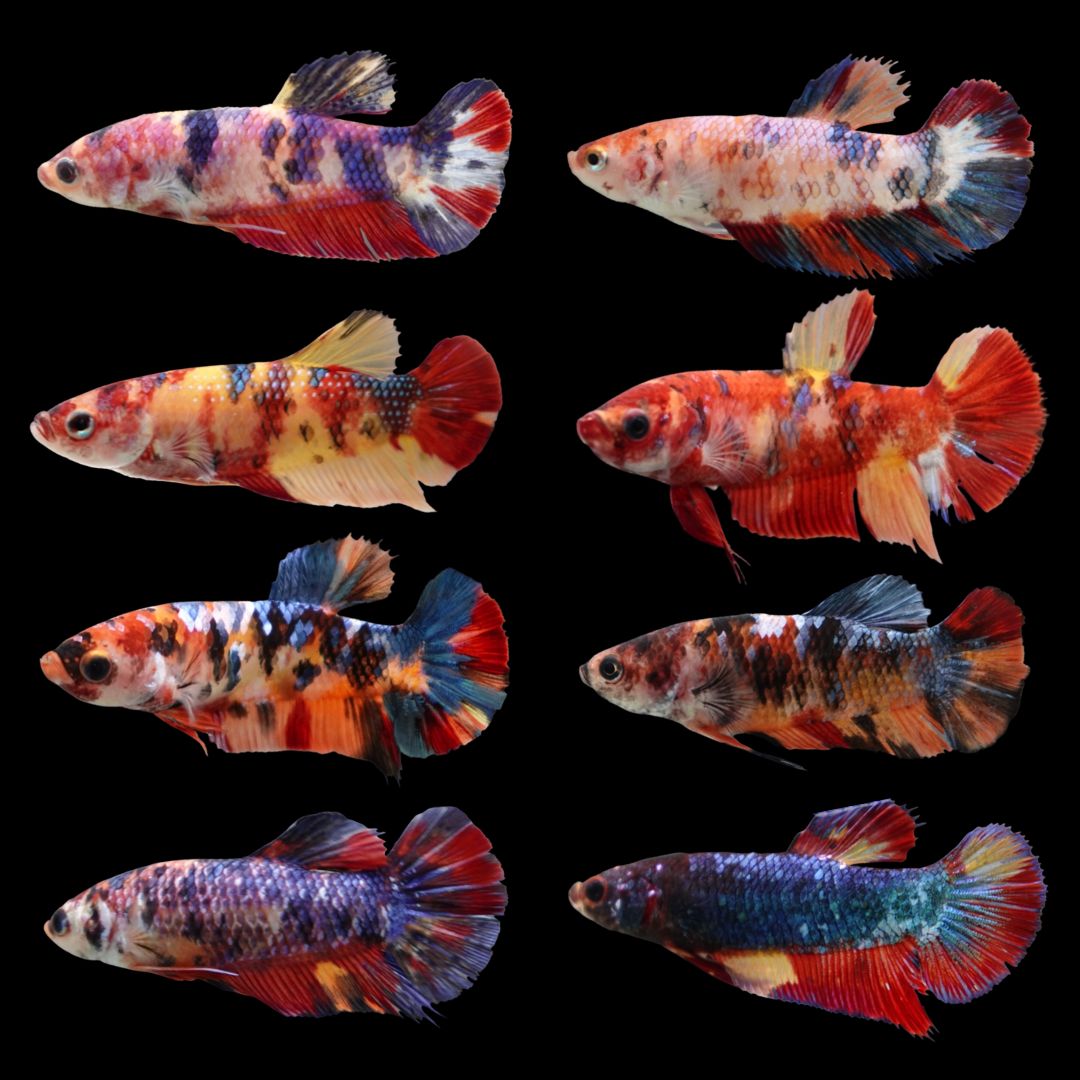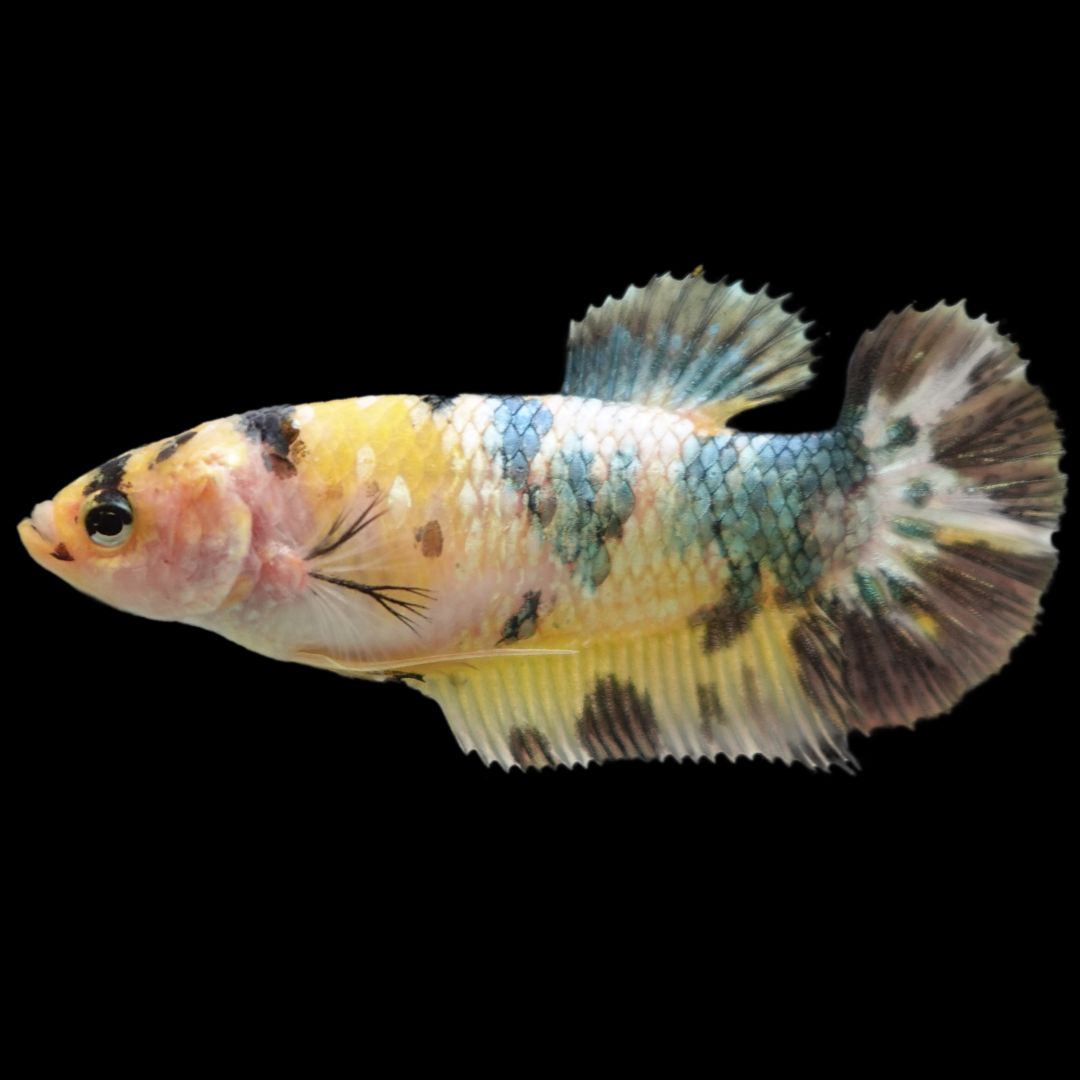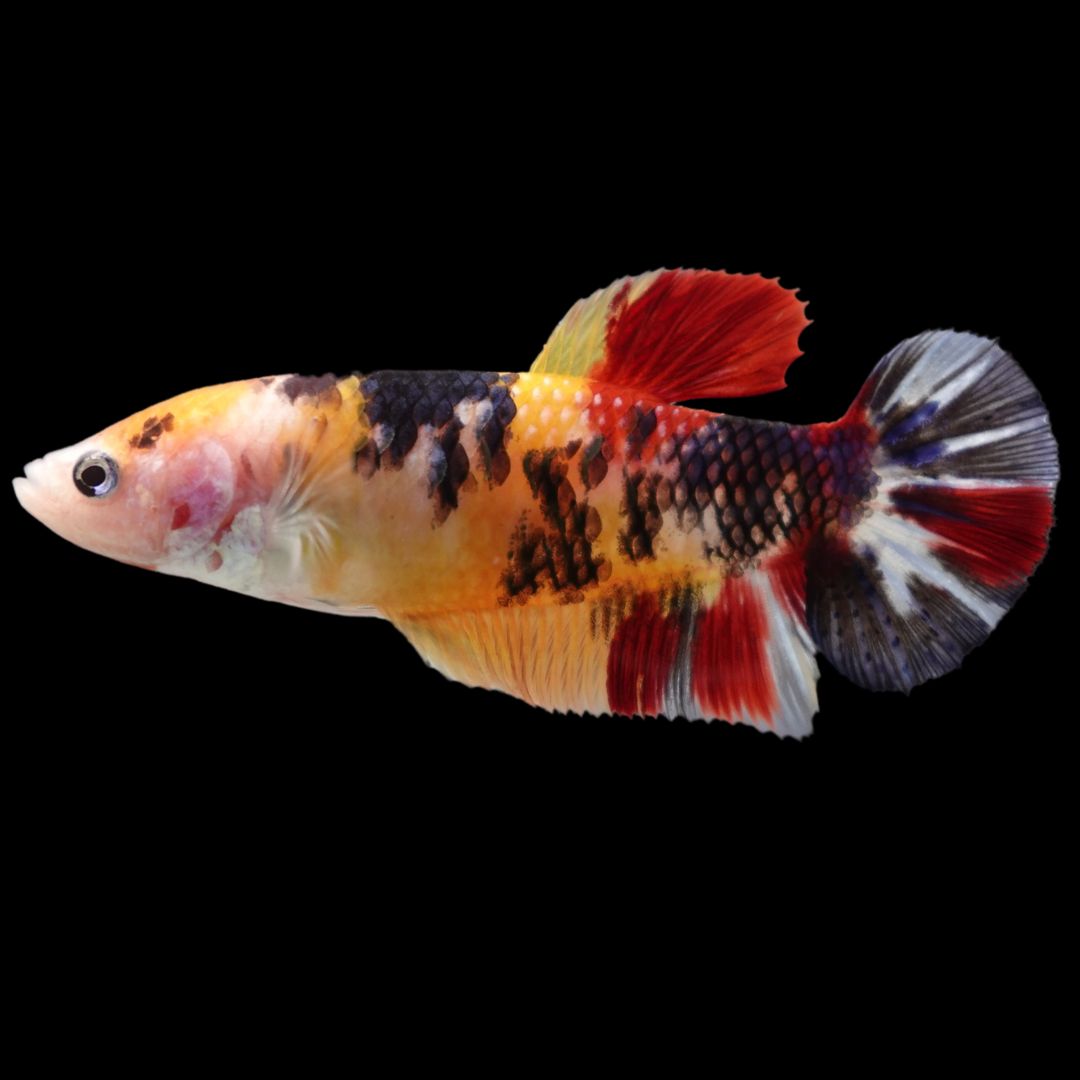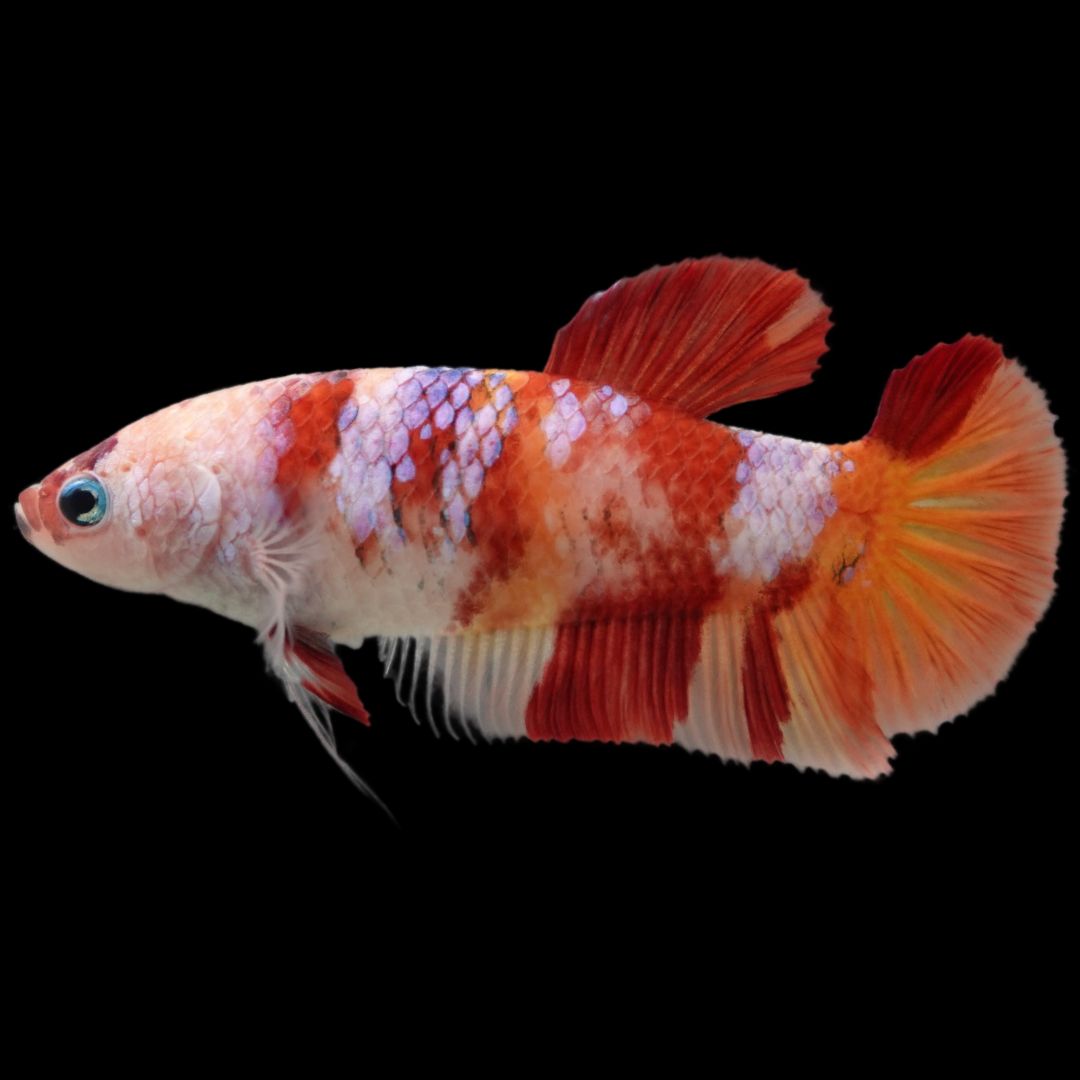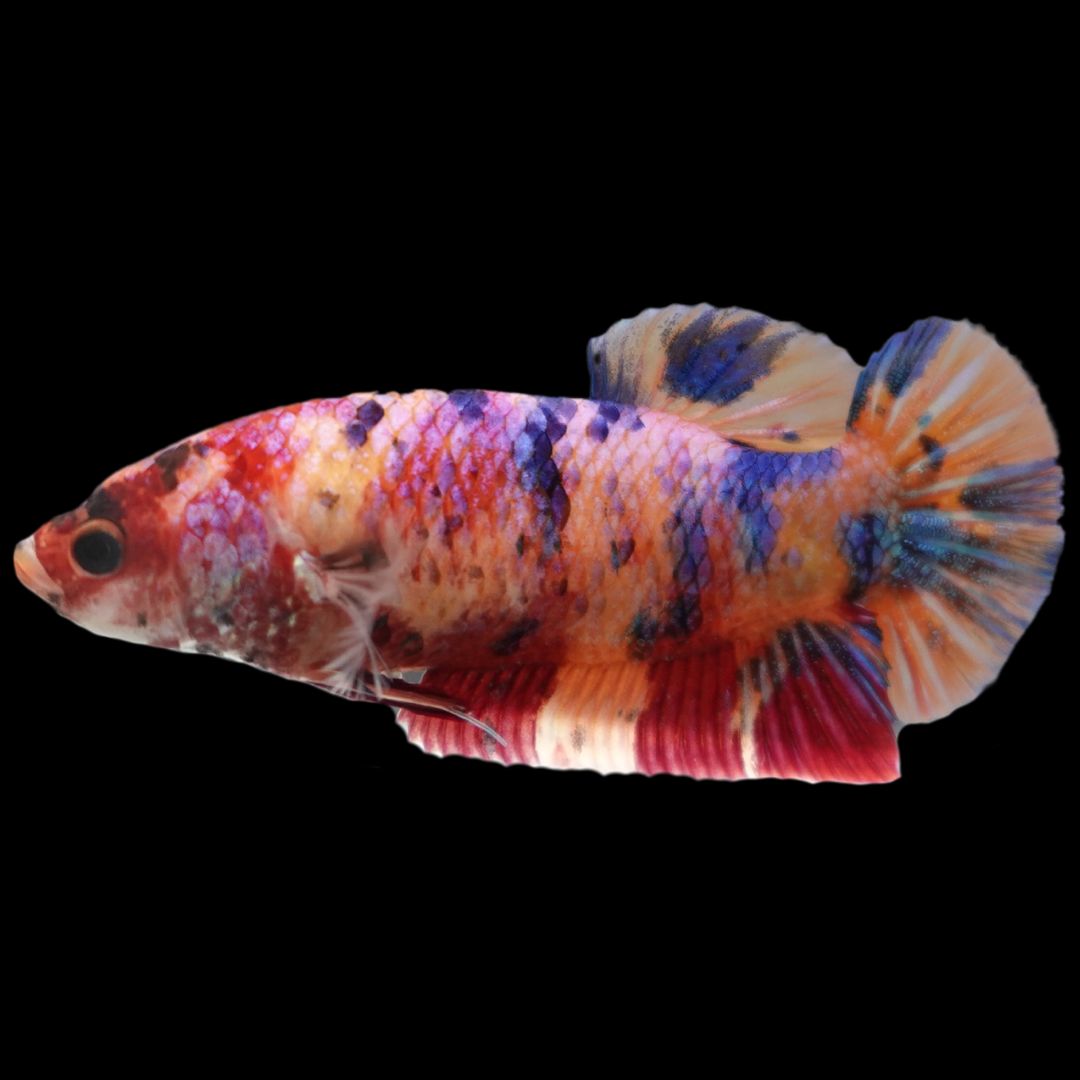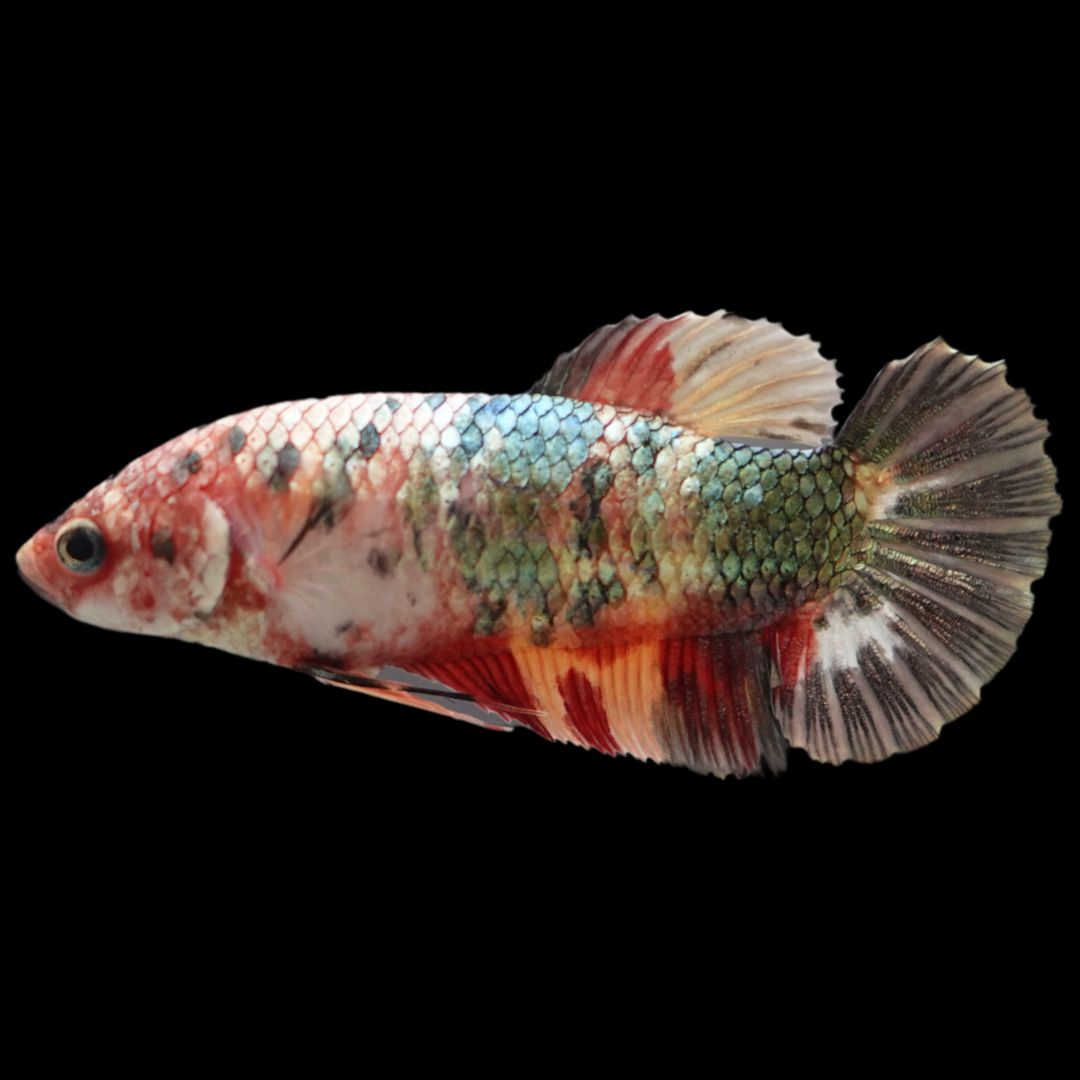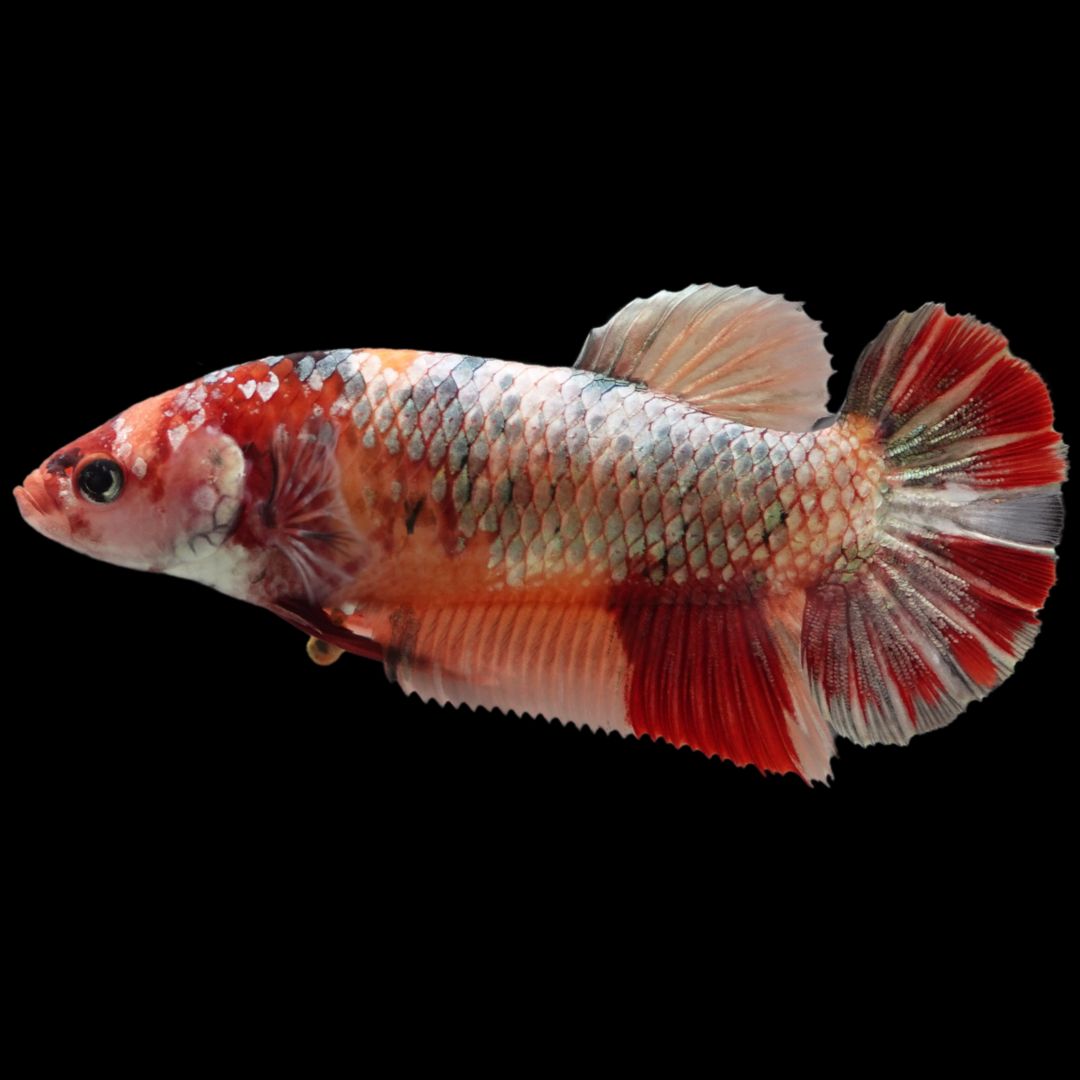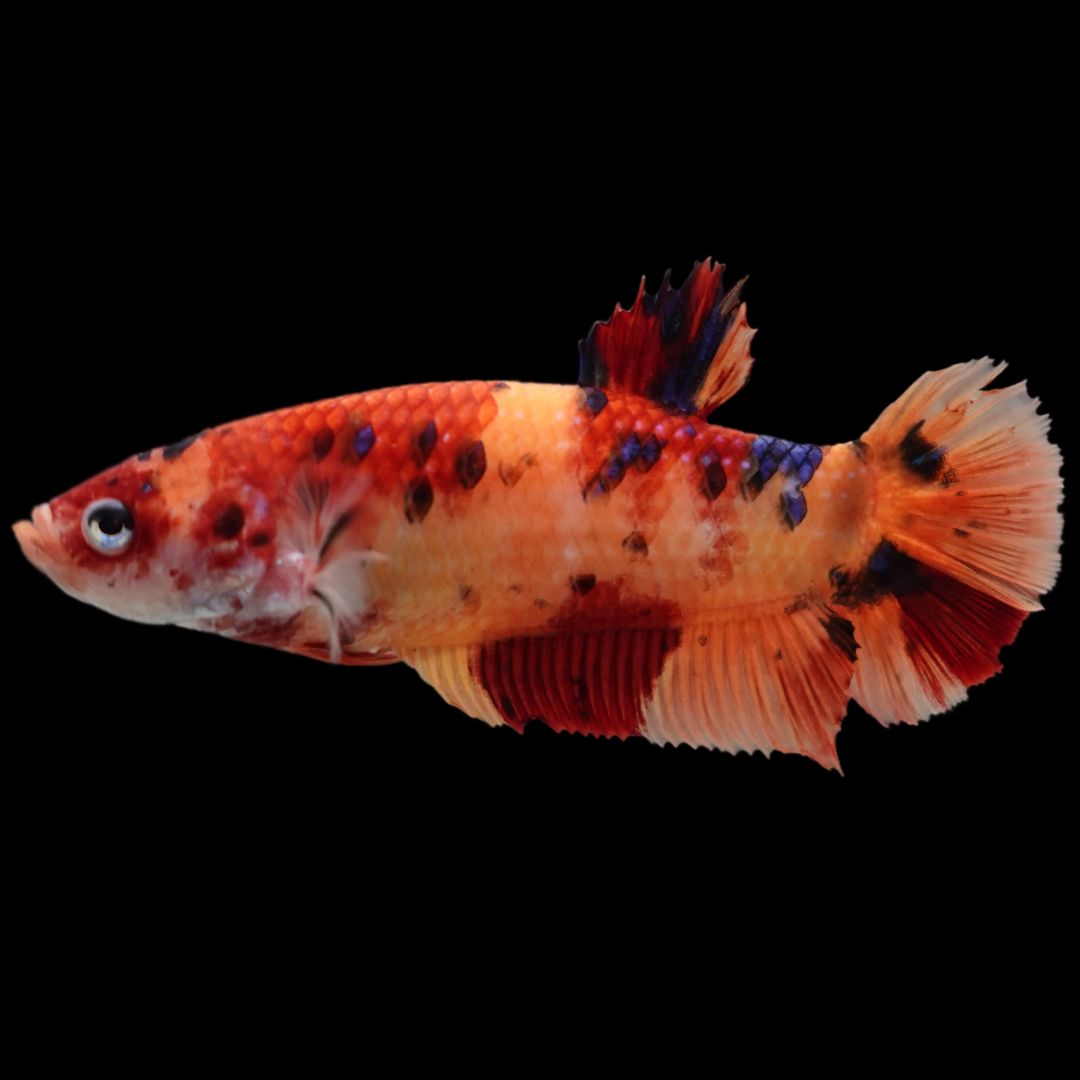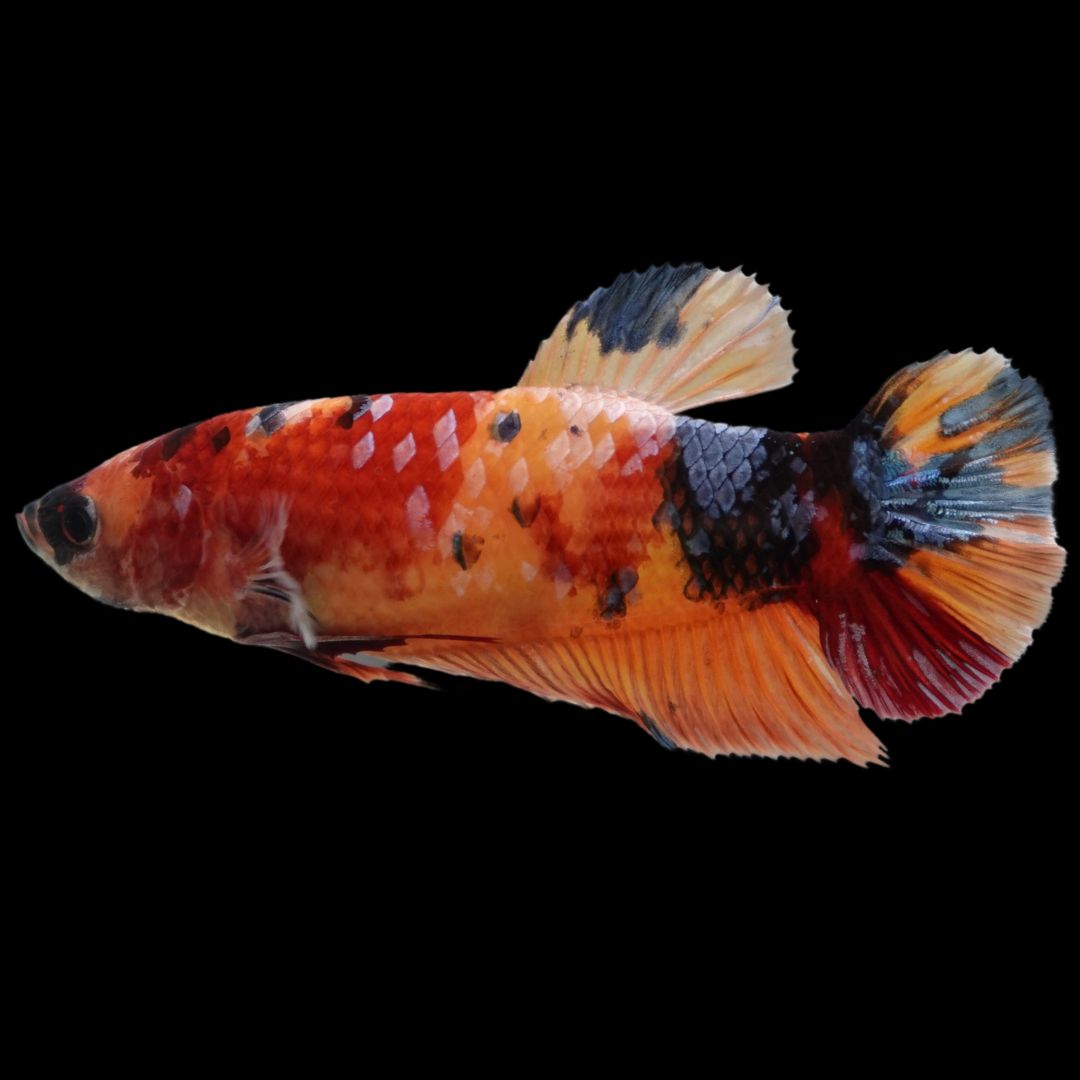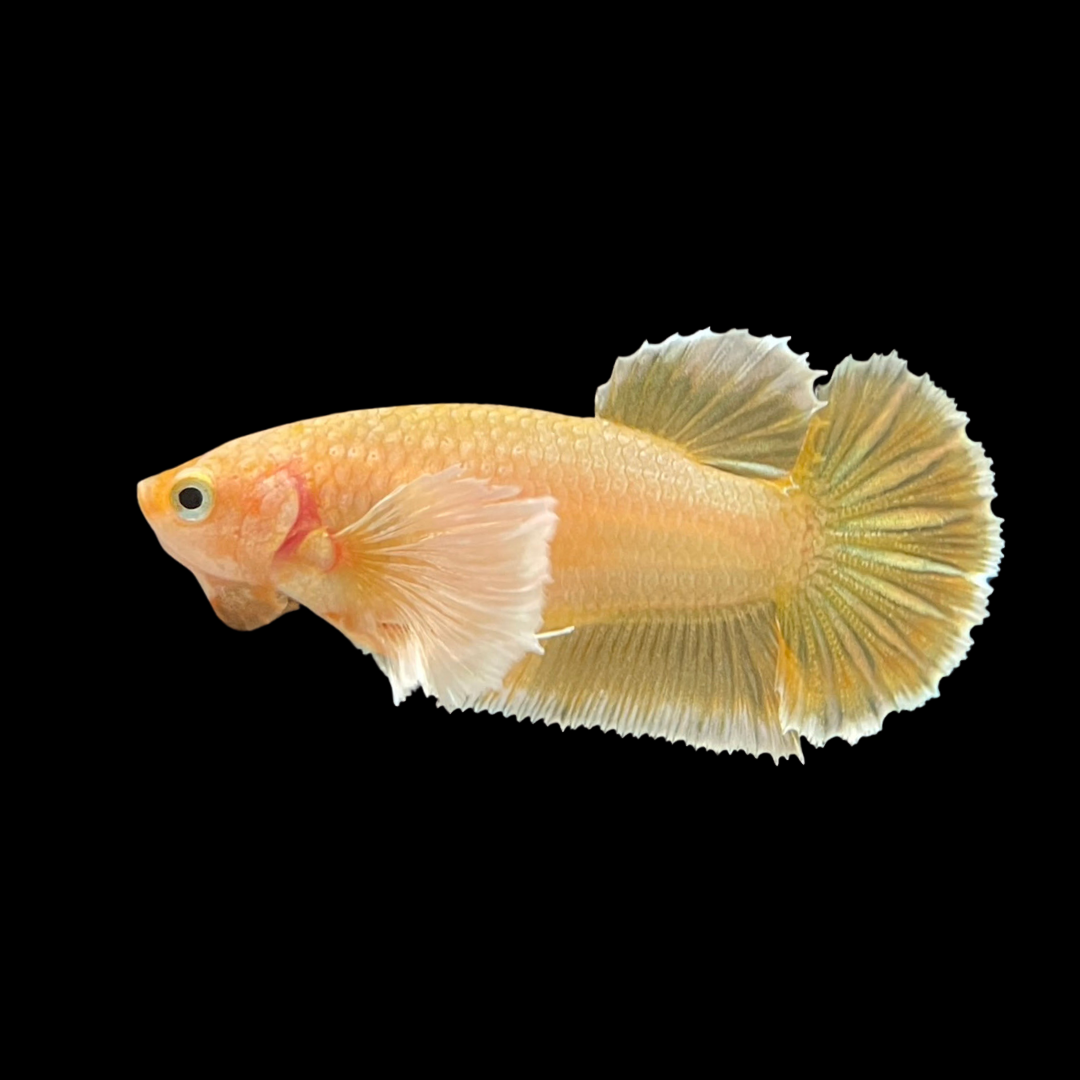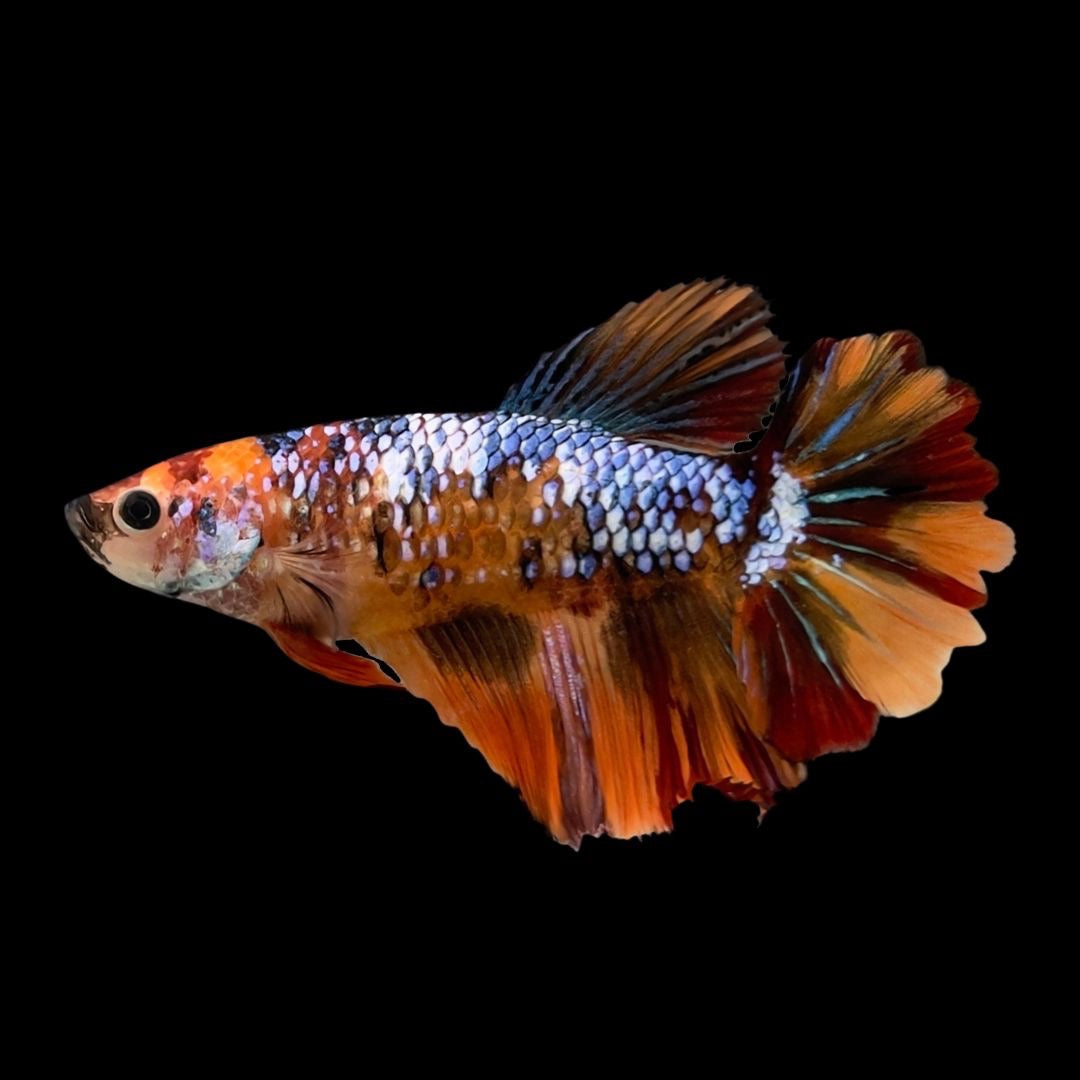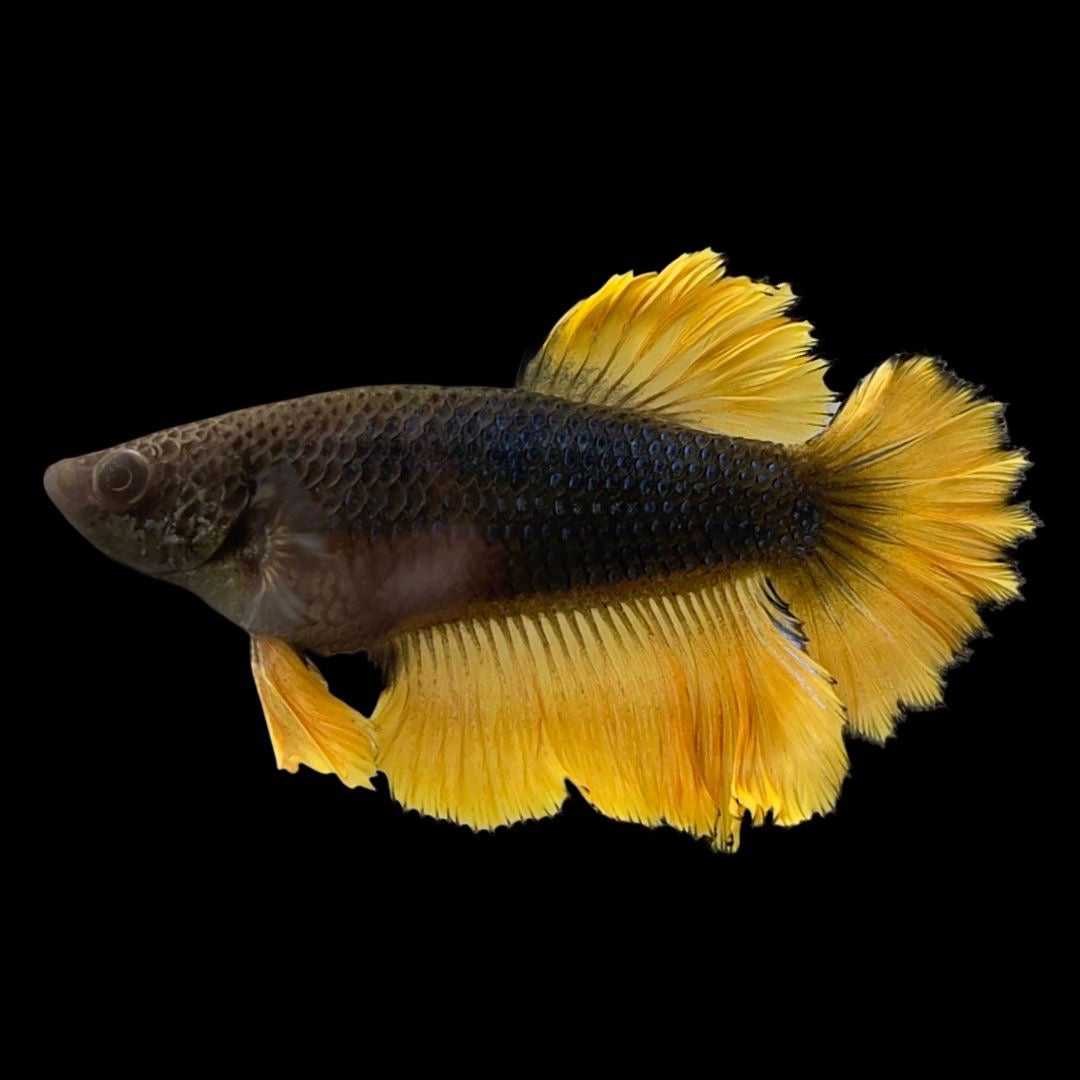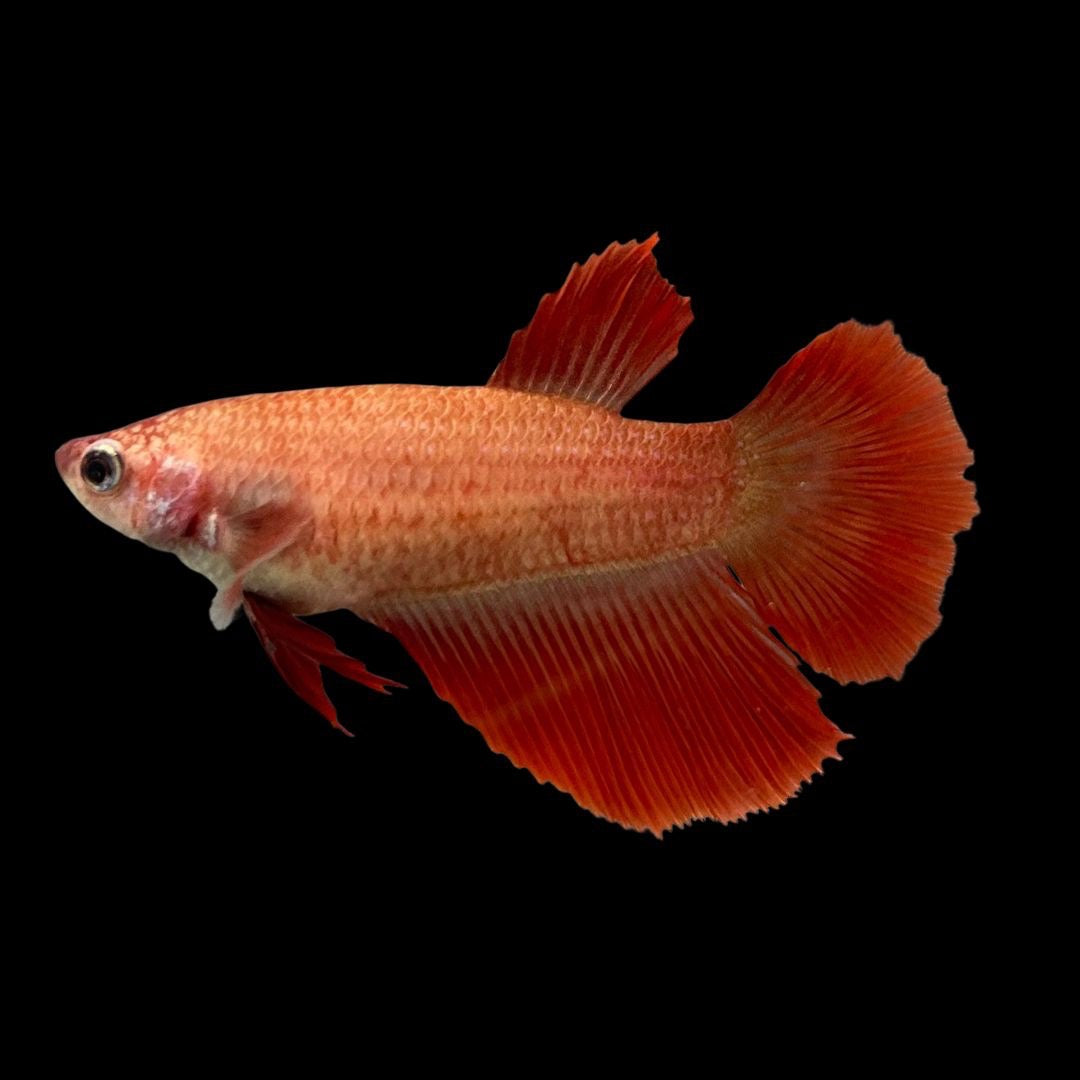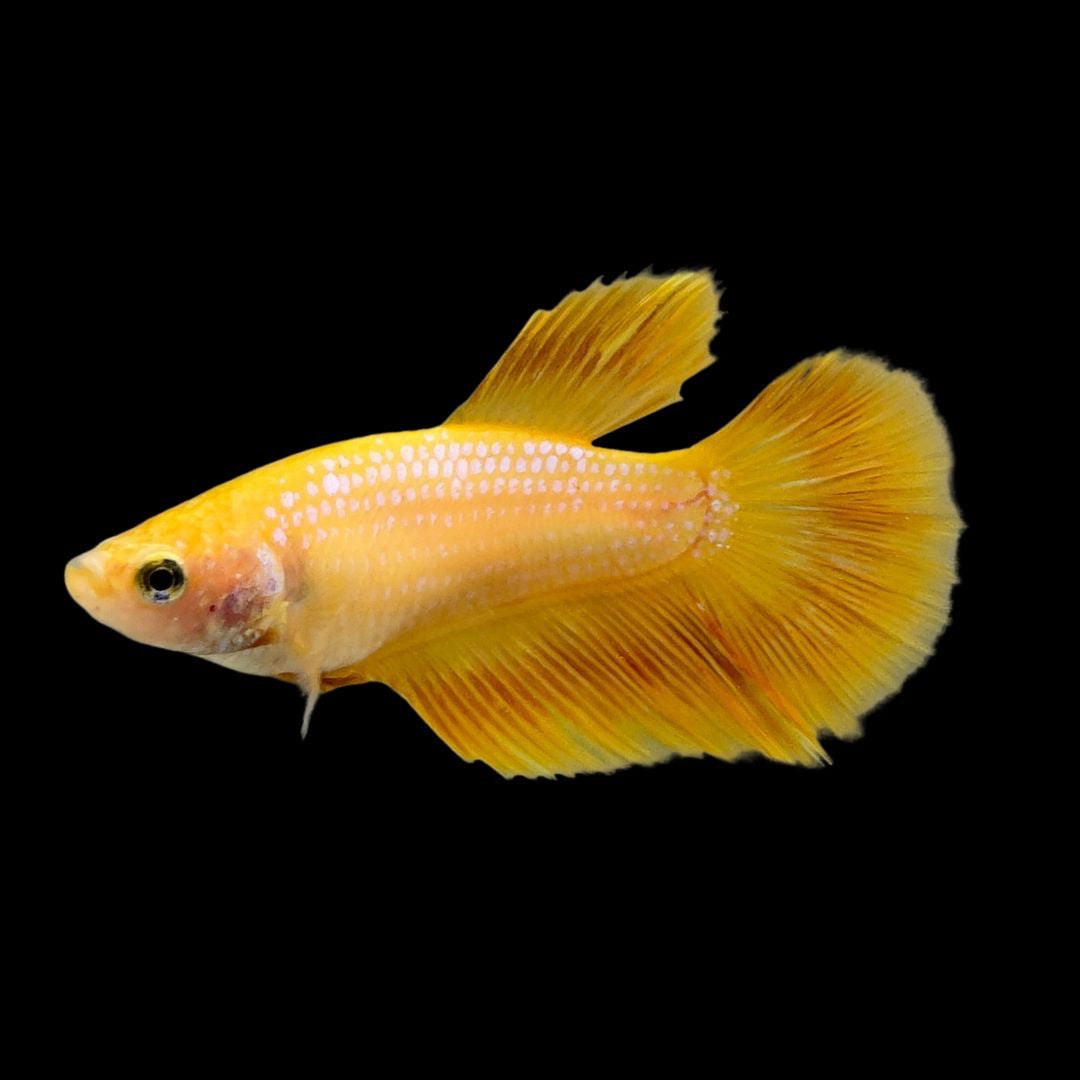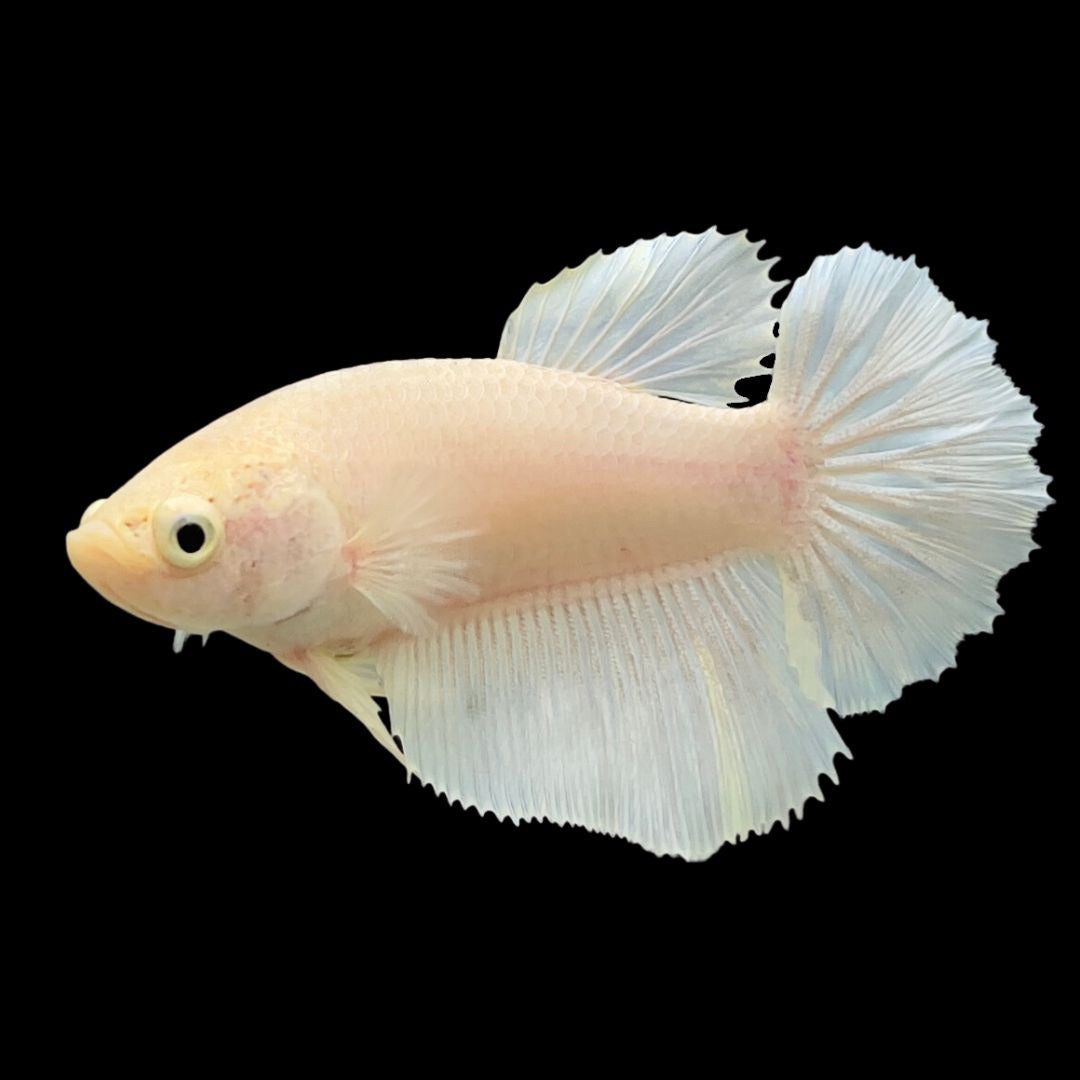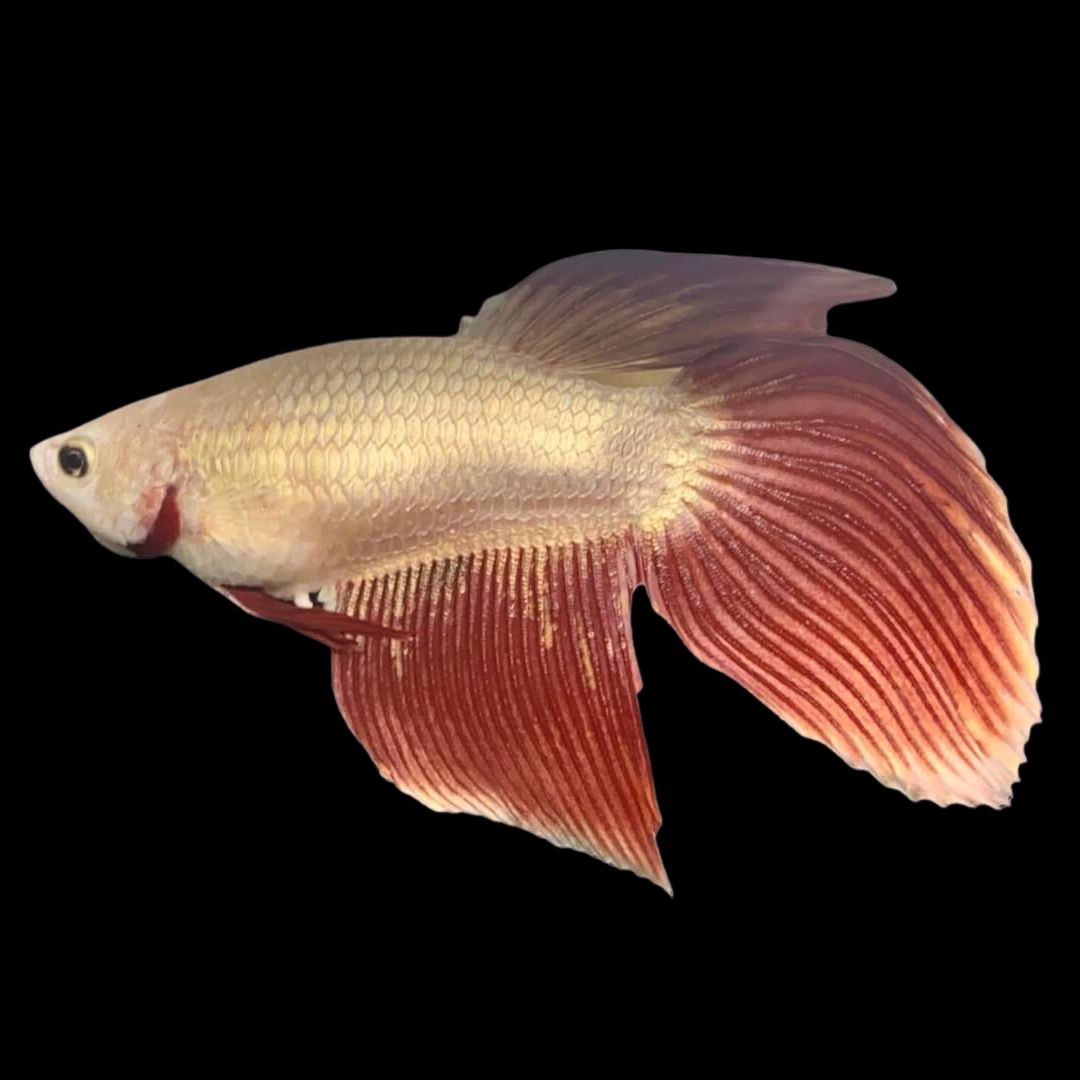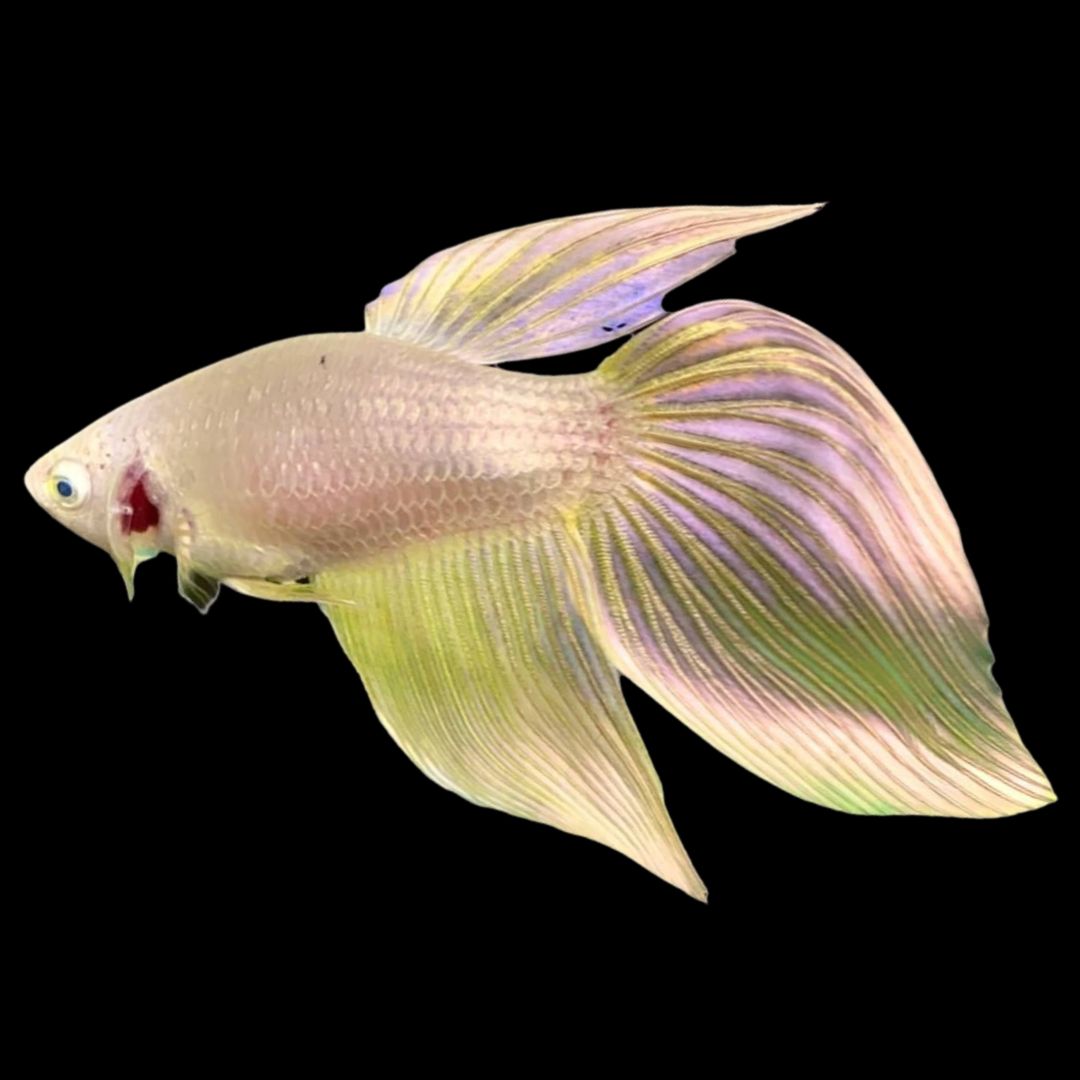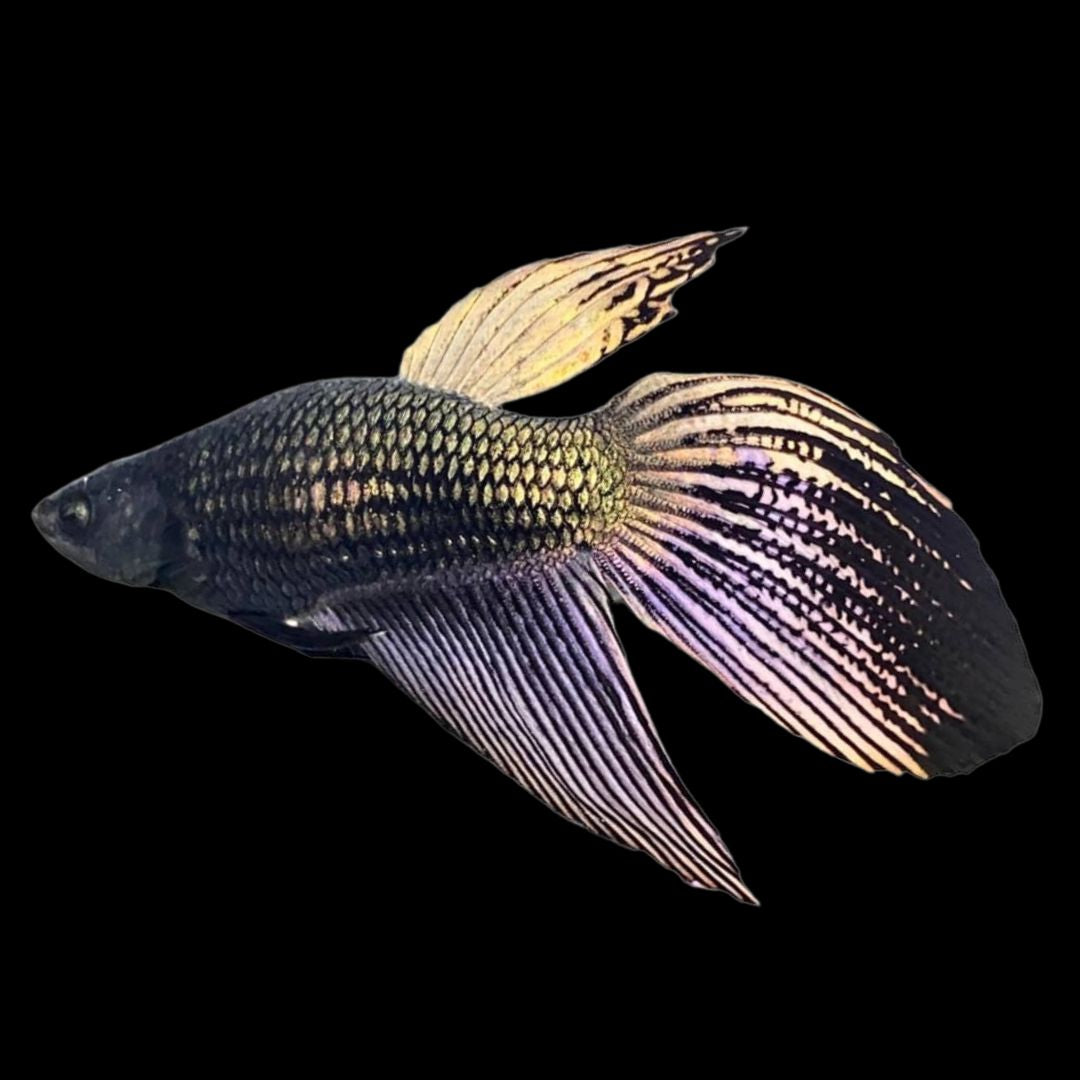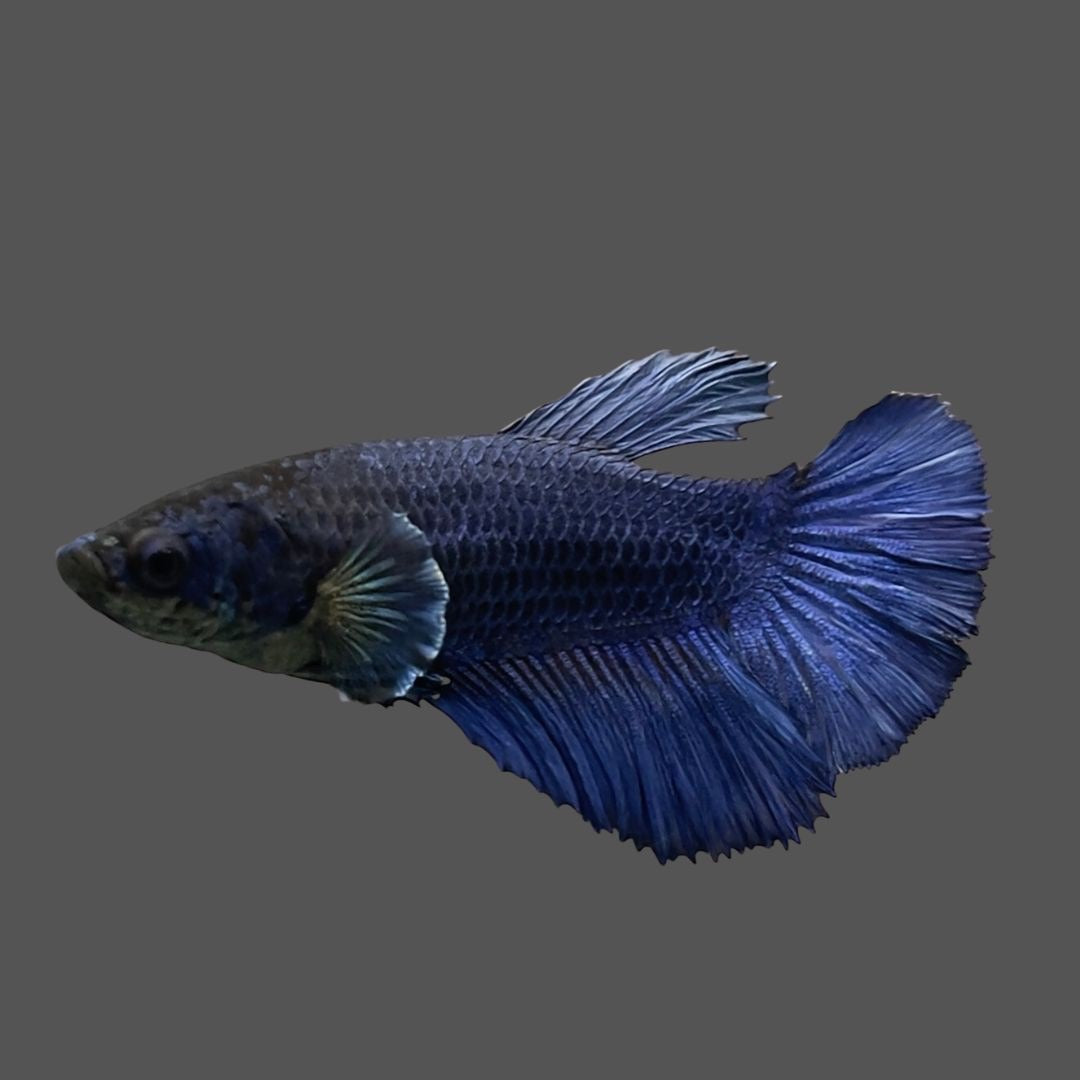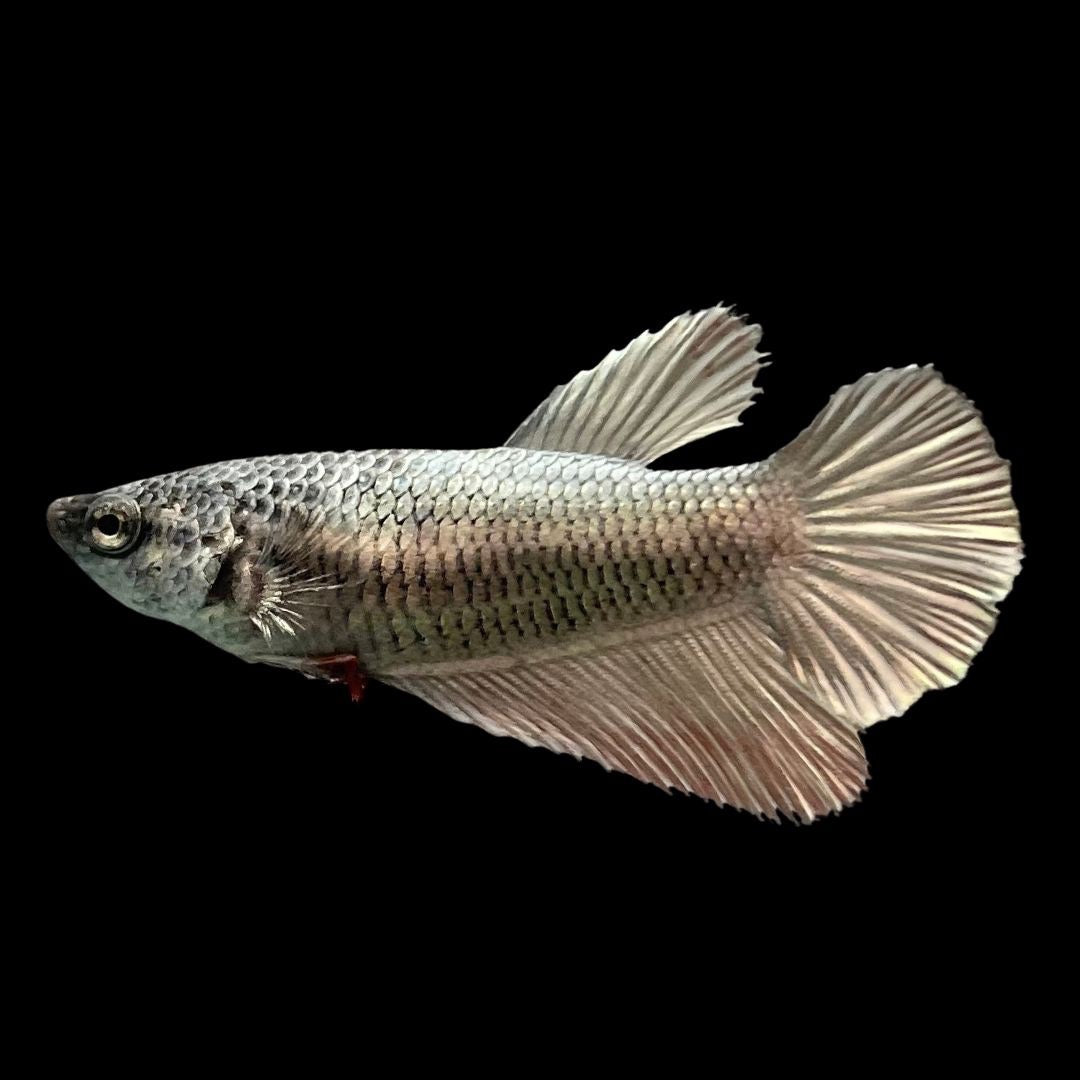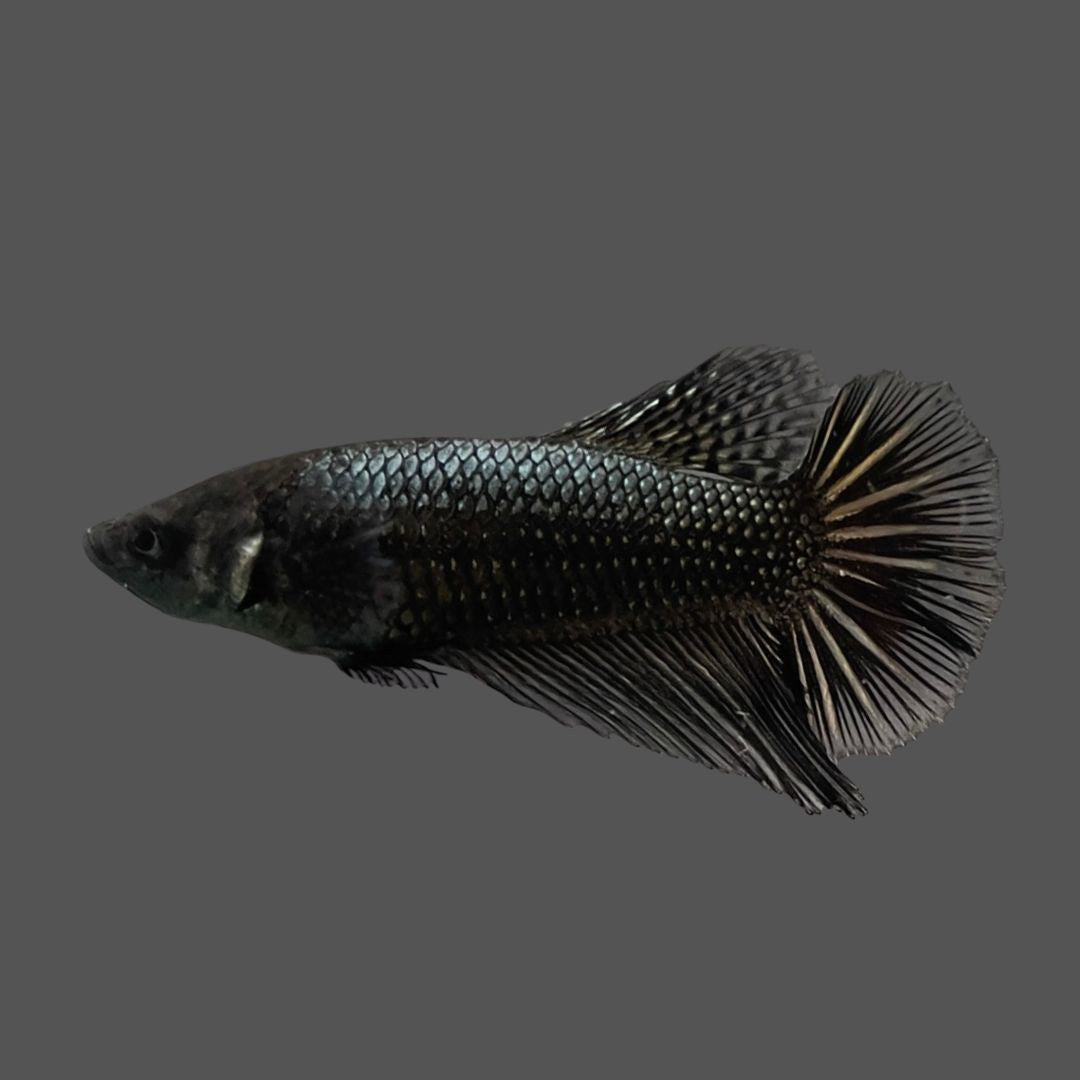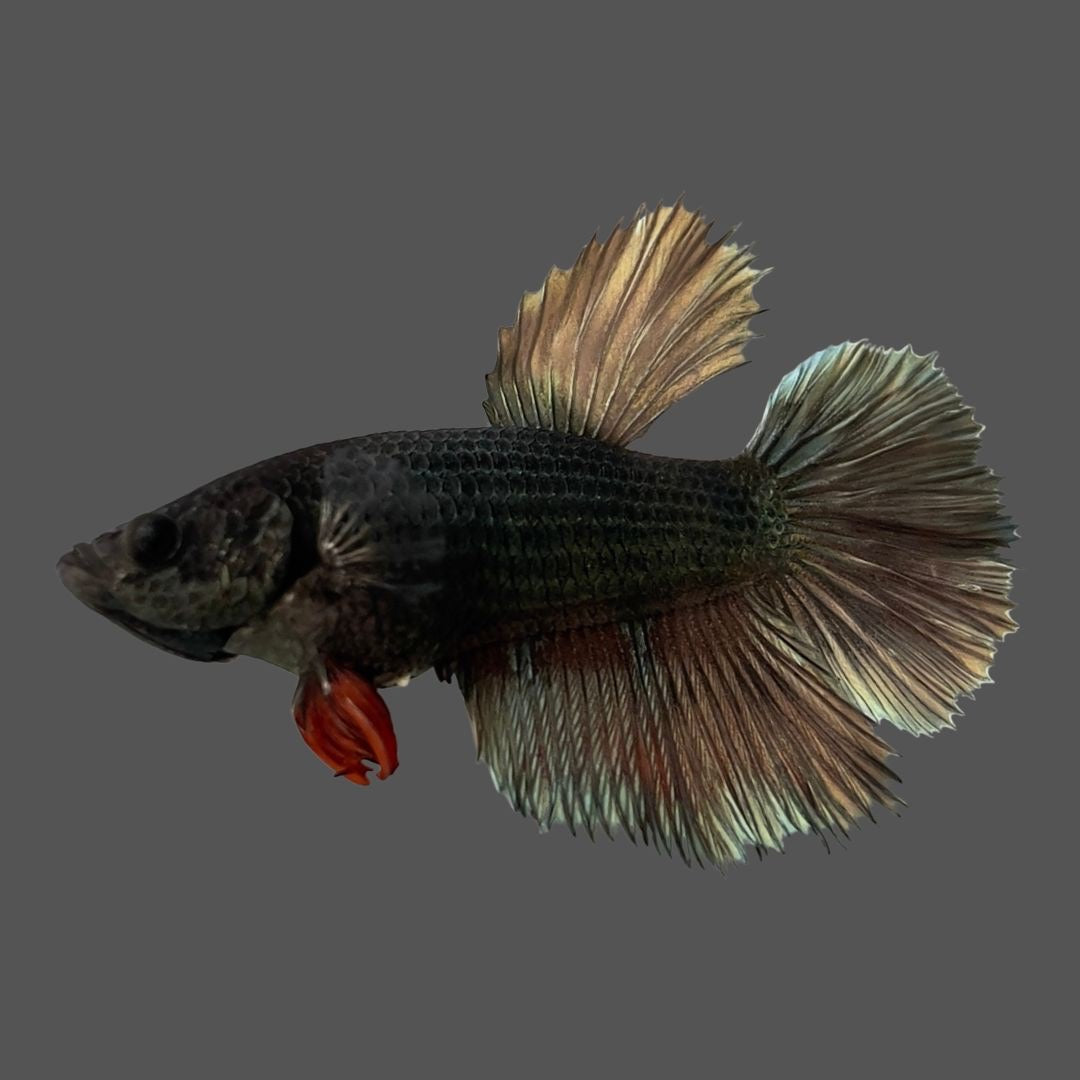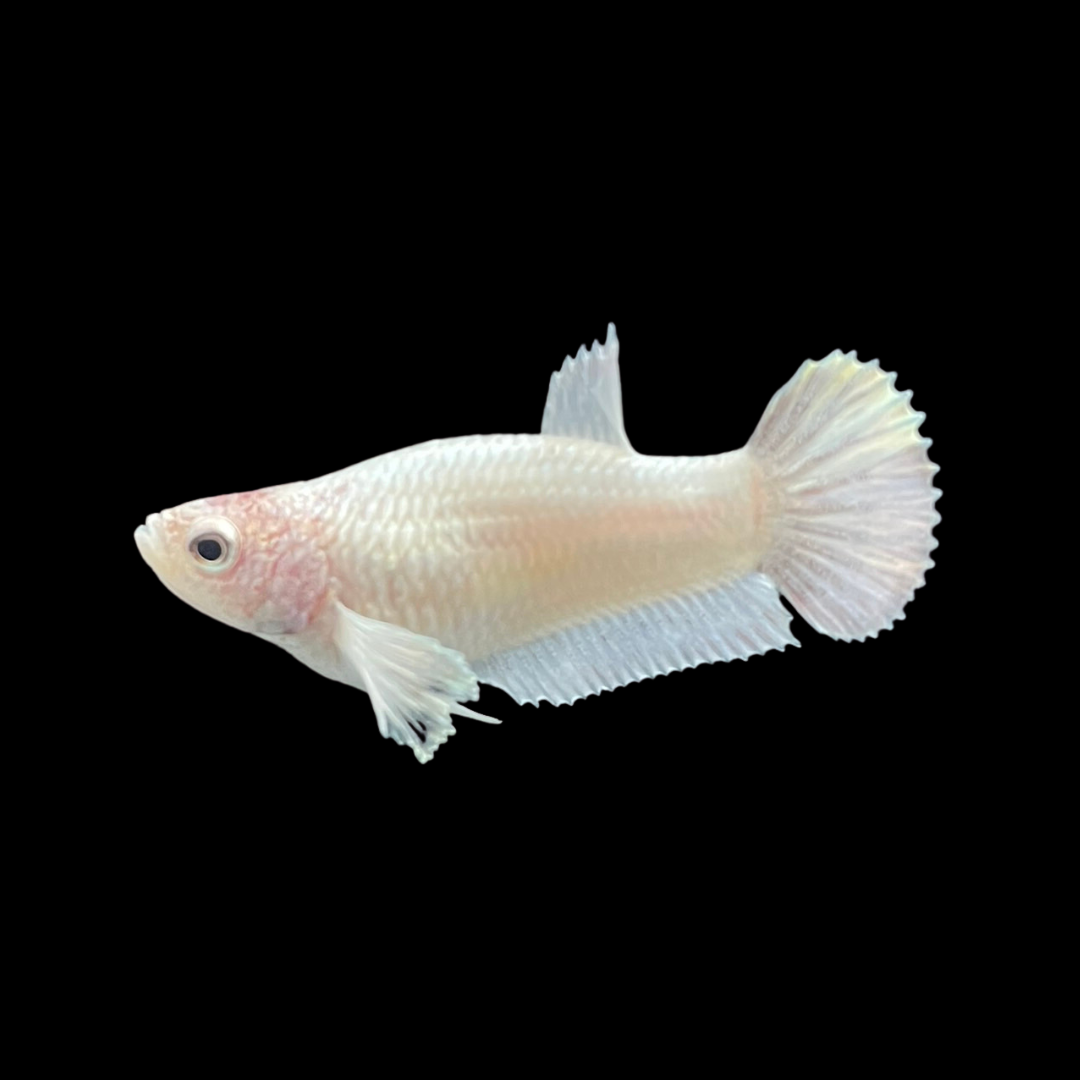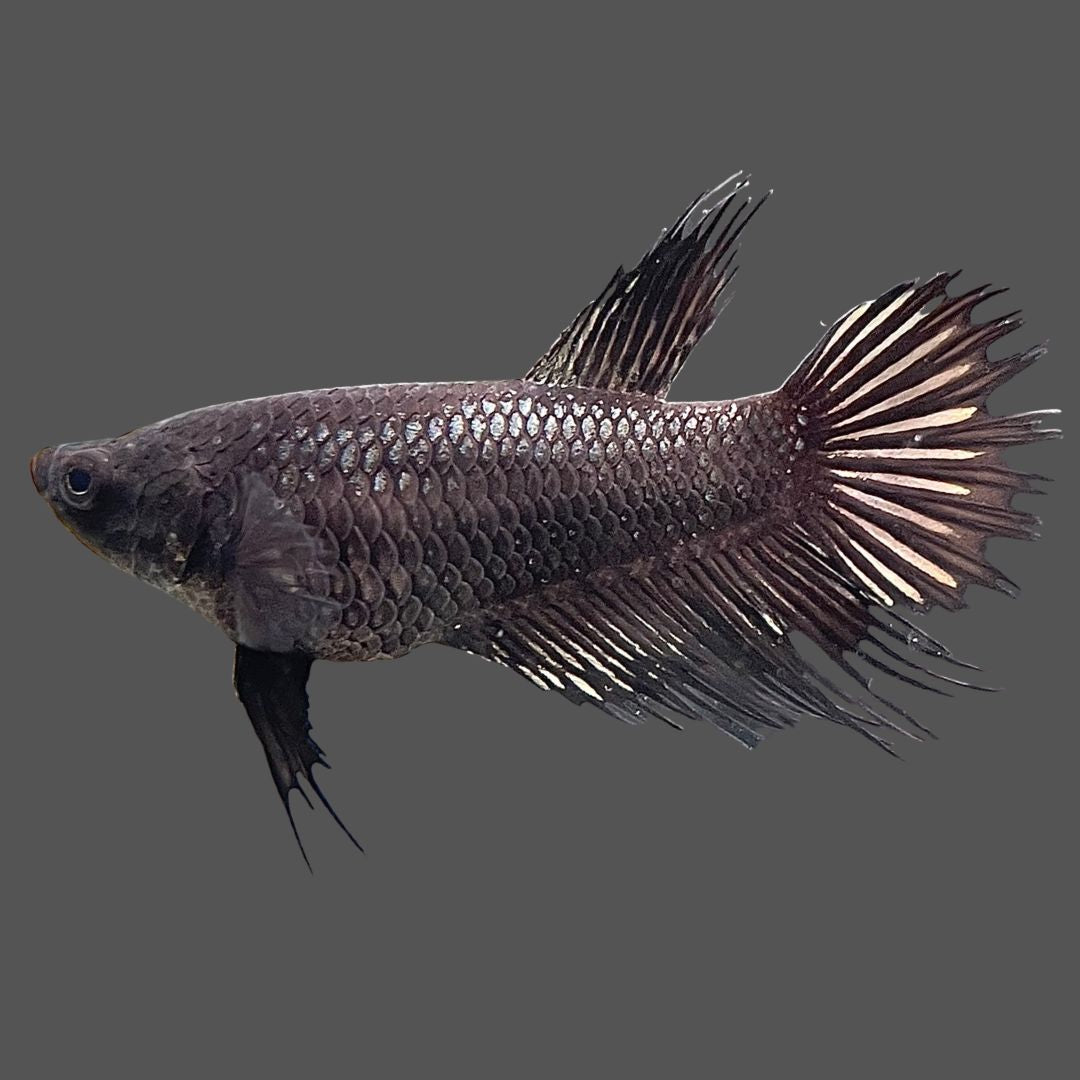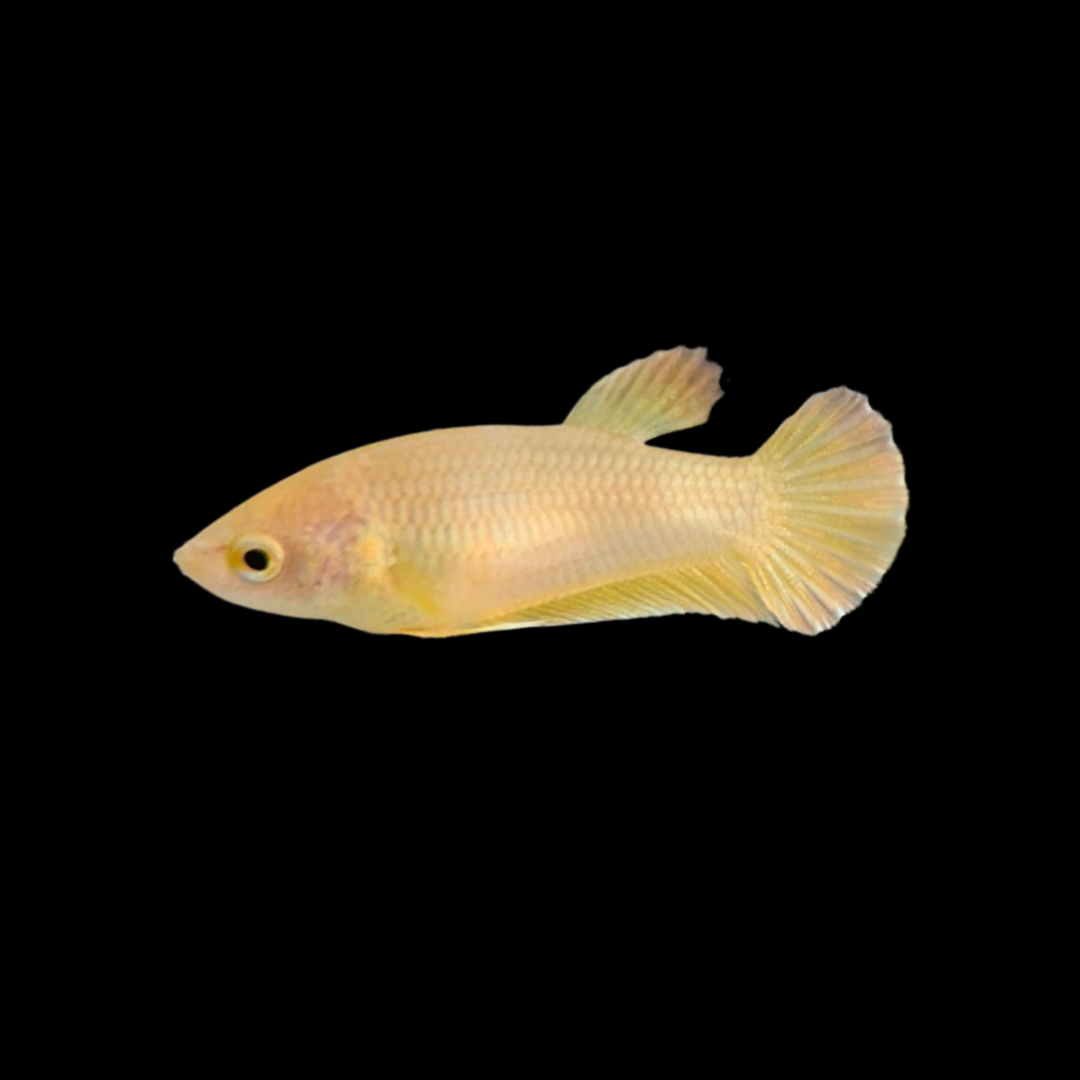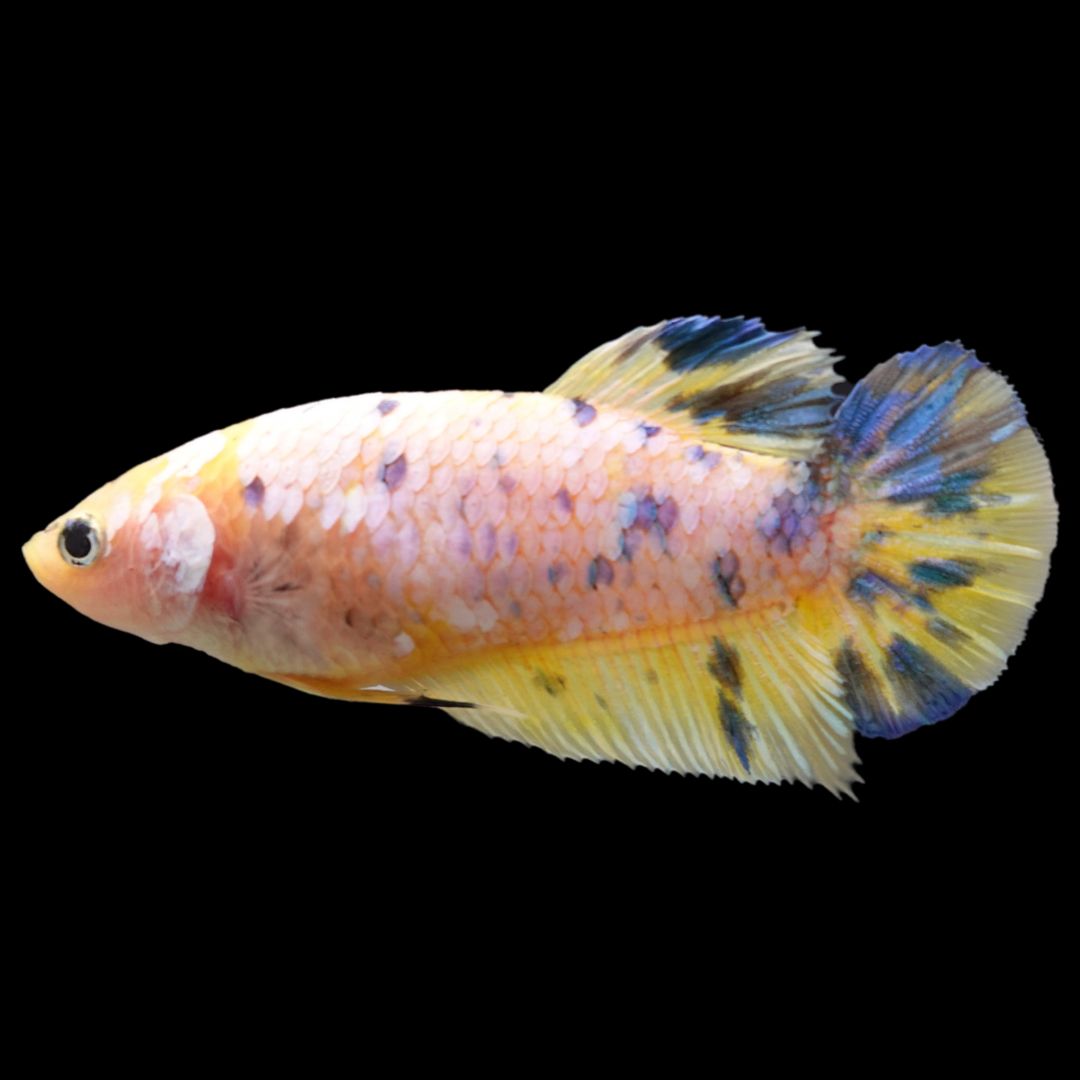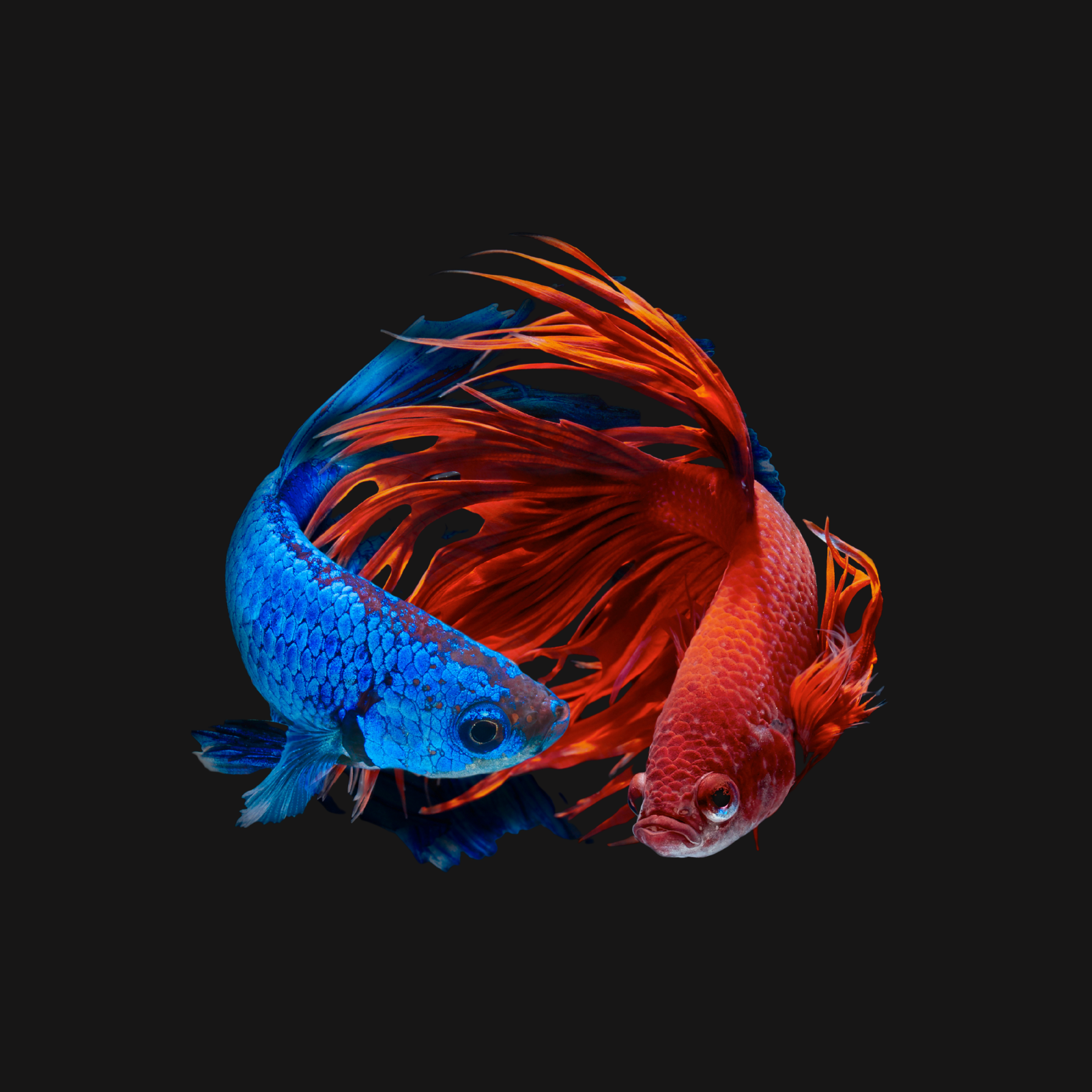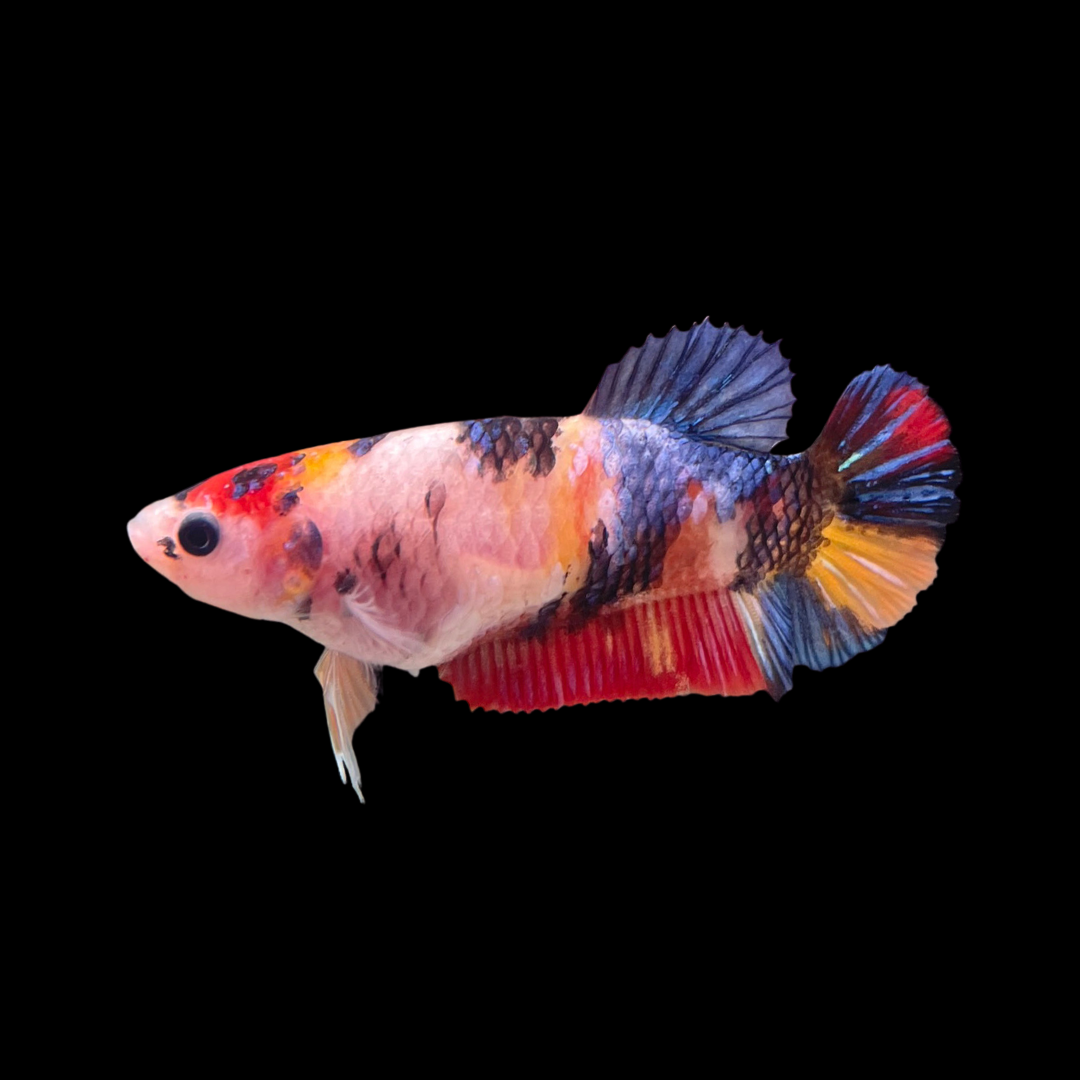
Female Betta Fish
FAQs
About Female Betta Fish
Female betta fish come in a variety of stunning types, each with its own unique characteristics and beauty. Here are some of the notable types:
- Koi Female Betta Fish: These bettas are known for their vibrant, marble-like color patterns, resembling the traditional Japanese Koi fish.
- Crowntail Female Betta: Recognizable by their distinct, spiky tail and fin rays that extend beyond the fin membrane.
- Veiltail Female Betta: Known for their long, flowing tails that drape down like a veil, adding an elegant grace to their appearance.
- Halfmoon Female Betta: These have a tail that fans out to form a perfect half-moon shape, creating an impressive display.
- Elephant Ear/Dumbo Female Betta: Named for their large, pectoral fins that resemble elephant ears, they add a unique flair to the betta’s appearance.
- Female Plakat Betta Fish: A short-tailed breed known for their more traditional, natural look, reflecting their wild ancestors.
- Female Alien Betta: Alien bettas are known for their striking colors and patterns, which make them stand out.
- Double Tail Female Betta Fish: These bettas have a unique tail type that splits into two lobes and may have a larger dorsal fin.
- Giant Female Betta Fish: As the name suggests, they are larger than typical bettas, providing a commanding presence.
- Female King Betta: Similar to giants, King bettas are larger and more robust, with a commanding appearance.
- Betta Imbellis Female: A more peaceful and less aggressive species, known for its more subtle but still attractive colors.
- Dragon Scale Betta Female: Characterized by their thick, bright, and often metallic scales that resemble the scales of a dragon.
- Female Samurai Betta: These bettas are distinguished by their striking color contrast and patterns, reminiscent of Samurai armor.
Each type of female betta fish brings its own unique beauty and personality to an aquarium, making them a popular choice for fish enthusiasts. Whether you're attracted to the vibrant colors of the Koi Betta or the elegant tail of the Veiltail, there's a female betta type that can appeal to every preference.
Female betta fish are renowned for their vibrant and diverse color patterns. Here are some of the most striking colors you can find in female betta fish:
- Blue Betta Fish Female: These bettas exhibit a range of blue shades, from deep royal blue to light sky blue.
- Female White Betta Fish: These fish are captivating with their pure white or cream colors, sometimes with iridescent scales.
- Female Red Betta Fish: Known for their bright, vivid red coloring, these bettas are among the most striking.
- Purple Betta Fish Female: A rarer color, these bettas display various shades of purple, from lavender to deep violet.
- Black Orchid/Black Female Betta Female: Characterized by their dark, often glossy black color, making them a unique and elegant choice.
- Pink Female Betta Fish: These bettas range from soft pastel pinks to brighter shades, adding a delicate beauty to any aquarium.
- Yellow Female Betta Fish: They stand out with their bright, sunny yellow coloring, often in vibrant hues.
- Female Mustard Gas Betta: They have a distinctive color pattern, usually with a yellow body and blue or green fins.
- Rainbow/Colorful Female Betta Fish: These bettas are a mix of several bright colors, often featuring combinations of red, blue, green, and more.
Their diverse palette ranges from bold and striking to soft and subtle, cater to a wide array of aesthetic preferences.
Absolutely! pretty female betta fish, come in a variety of stunning colors and fin types. While they might not have the long, flowing fins of their male counterparts, female bettas are equally captivating. They exhibit vibrant colors, unique patterns, and can be just as striking as males. With proper care and a healthy environment, their colors can become even more vivid, making them a beautiful addition to any aquarium.
The terms "female Chinese fighting fish" and "female Japanese fighting fish" are often used interchangeably with "female betta fish" or "female Siamese fighter." However, there are no distinct species known specifically as Chinese or Japanese fighting fish. These terms generally refer to regional variations or misconceptions about the betta fish's origin, which is primarily Southeast Asia, including Thailand (formerly Siam). The female bettas from these regions share similar characteristics and care requirements.
Female betta fish are available for purchase at various pet stores, fish specialty shops, and online. A reliable online source for purchasing female bettas is Thailand Betta Fish. We offer a wide selection of female bettas in different colors and types, ensuring quality and health.
When looking to buy female betta fish, consider their health, color, and type. Make sure they are active and free from visible health issues. If you're interested in breeding, look for a female fighter fish ready to breed, often indicated by a fuller body and showing interest in males. For a convenient purchasing experience, you can buy female betta fish online from reputable sources like Thailand Betta Fish. We provide detailed information and accurate images of the fish.
Our Legacy
We work tirelessly for 30 years to uphold the high standards set by our Thai ancestors and fellow breeders, ensuring that each and every Betta Fish for sale we produce is of the highest premium quality and meets the expectations of our customers. When you buy live betta fish online from us, you're not just purchasing a beautiful and captivating pet. You're also becoming a part of a long and rich history, and joining a community of people who appreciate and value the beauty and wonder of these amazing Betta Fish.


Female Betta Fish Care Guide
Yes, the female betta fighter fish, while still capable of being territorial, is generally less aggressive than the male betta. Unlike males, female bettas can coexist in groups under the right conditions, often referred to as a sorority. However, it's important to monitor their interactions, as they can show aggression towards each other if the tank environment isn't set up properly with enough space and hiding places.
Female fighter fish, also known as female Siamese fighters, can be kept in community tanks, but care must be taken in selecting tank mates. They are best paired with non-aggressive, short-finned fish to avoid any potential nipping or harassment. It's crucial to provide a tank with plenty of space and hiding spots to minimize stress and aggression. Always monitor the tank to ensure a peaceful coexistence.
It's generally not advisable to keep male and female bettas together permanently. They can exhibit aggressive behavior, especially if the tank is too small or lacks adequate hiding spaces. Males are territorial and may view the female as a threat, leading to potential harm for both fish.
Male and female bettas can be placed together briefly for breeding purposes under controlled conditions. During this time, they should be closely monitored for signs of aggression. Once breeding is completed, they should be separated immediately to ensure their safety and well-being.
Keeping one male betta with multiple females is not advisable. Even if the tank is large, the male may still exhibit territorial aggression towards the females, which can lead to stress, injury, or even death. Betta fish are naturally solitary and do best in environments where they don't feel threatened by others.
Yes, you can keep multiple female bettas or girl betta fish together in the same tank, a setup commonly known as a betta sorority. However, it's important to do so cautiously. Female bettas can be less aggressive than males, but they still have territorial tendencies. To create a harmonious environment, ensure the tank is spacious enough (at least 20 gallons) and filled with plenty of hiding spots and plants. This allows each female betta to establish her own territory. Monitor them closely for signs of aggression and be prepared to separate them if necessary.
When introducing female bettas to a community tank, it's important to select tank mates carefully. Ideal companions are peaceful, non-aggressive species that do not resemble bettas in appearance, as bettas can mistake them for rivals. The tank should be spacious, with ample vegetation and hiding spots, to reduce stress and potential territorial behavior. Monitoring the tank dynamics closely, especially in the initial days, is crucial to ensure a harmonious environment.
While a 5-gallon tank might suffice for a single betta, it's generally too small for two, even if they are females. A cramped space can increase stress and provoke aggression, leading to potential harm. For two female bettas, a minimum of a 10-gallon tank is recommended, with more space being even better to allow for adequate territory and hiding spots.
Assorted female bettas can be kept together in a sorority, but it's important to ensure that the tank is large enough with an environment that reduces stress and aggression. This includes plenty of hiding places, plants, and a well-maintained water quality. Careful observation is key to ensure peaceful cohabitation.
A proper female betta tank setup should include a heater (maintaining a temperature around 78-80°F), a gentle filter, and a tank size of at least 5 gallons per betta. The environment should include plants (live or silk), hiding spots, and low or subdued lighting to mimic their natural habitat and reduce stress.
Keeping female bettas with guppies can be risky. While female bettas are less aggressive than males, they might still attack guppies, especially if the guppies have bright colors and long fins, which the bettas might mistake for other bettas.
Naming a female betta fish can be a fun and creative process. Some popular names include Luna, Sapphire, Ruby, Pearl, and Aurora. Names can be inspired by their color, personality, or even your favorite characters from books or movies.
Female betta fish lay eggs after a courtship and mating process with a male. The male builds a bubble nest where the female releases her eggs during spawning. The male then fertilizes these eggs and places them in the bubble nest for protection. This process requires specific water conditions and careful monitoring, as the male can become aggressive towards the female after spawning.
Proper care for female betta fish includes maintaining clean, warm water (around 78-80°F), providing a balanced diet of high-quality betta pellets and occasional live or frozen foods, and ensuring the tank is spacious with plenty of hiding spots. Regular tank maintenance, including partial water changes and filter cleaning, is crucial to keep the environment healthy.
Betta fish cannot get pregnant in the absence of a male. Female bettas can produce eggs, but these eggs only develop into fry after being fertilized by a male. Without a male, the female may still produce eggs but will eventually reabsorb them or release them without development.
Female bettas flare, displaying their gills and spreading their fins, as a sign of aggression or territoriality. This behavior can be a response to seeing another betta, their reflection, or even other fish they perceive as a threat. It's a natural behavior but should be monitored to ensure it doesn't lead to stress or aggression-related issues.
Bloating in female bettas can be caused by overfeeding, constipation, or more serious health issues like infections or dropsy. If your female betta appears bloated, assess her diet and feeding schedule. Offering a varied diet and ensuring not to overfeed are key. If the problem persists or is accompanied by other symptoms, seek advice from a veterinarian.
Female betta fish can fight each other, especially in smaller tanks or if there are too few females to establish a stable social hierarchy. While they are generally less aggressive than males, establishing a sorority tank requires careful planning, sufficient space, and regular monitoring to manage aggression.
Female betta fish typically grow to about 2 to 2.5 inches in length, not including their fins. Their size can vary depending on genetics, diet, and the quality of their environment.
Female bettas rarely make bubble nests. It's typically the male betta that creates these nests as part of the breeding process. However, females will produce eggs that the male then cares for in his bubble nest.
With proper care, a female betta fish can live for about 3 to 5 years. Factors that influence their lifespan include genetics, diet, water quality, and overall tank conditions.
Female bettas have a streamlined body with a rounder belly compared to males. They have shorter fins and come in a variety of colors and patterns. Female bettas possess a lateral line system for detecting vibrations in the water, gills for breathing, and a labyrinth organ allowing them to breathe atmospheric air. Their anatomy is well-adapted for life in shallow, low-oxygen waters.

